

NOVEMBER /DECEMBER 2022 BRAZIL OPENS AERIAL FIREFIGHTING RESEARCH STATION WILDFIRE SOS HeliQwest Multi-National Operations



THE TIP OF THE SPEAR REQUIRES EXCELLENCE Aerial firefighting is front line work. It requires commitment, expertise and reliability. Neal Aircraft has been rooted in these qualities for over 75 years. Our sales, service and parts support are dedicated to ensuring your success. 806.828.5892NEALAIRCRAFT.COM
We’ve been working side-by-side with firefighters for nearly 60 years. Our PHOS-CHEK® fire retardants were the first approved by the USDA Forest Service and they’re getting better every year.




We owe it to people to use the best science available. Whether it’s a product’s firefighting performance, environmental safety or effect on equipment and infrastructure –proof is required.



make



Fighting the devastating effects of fire requires a special kind of person – and a special kind of company.
Developing fire safety solutions is more than a job. Our industry experts are part of a dedicated, multiagency group of people working to
the world a safer place. Experience Responsibility Integrity perimeter-solutions.com When the Job Doesn’t Offer Second Chances Trusted. Solutions That Save. Property. Communities. Critical infrastructure. The environment. Lives. You have to know that the people you’re working with care – and always have your back. At Perimeter Solutions, we’re committed every way and every day to earning your trust.
P.O. Box 850 • Perry, GA 31069 USA
475 Myrtle Field Rd. • Perry, GA 31069 USA PHONE: 478-987-2250 FAX: 478-352-0025 info@marsaylmedia.com • aerialfiremag.com
AERIALFIRE IS PUBLISHED BY

PUBLISHER: Graham Lavender - graham@marsaylmedia.com
EDITOR IN CHIEF: Ryan Mason - ryan@marsaylmedia.com

ACCOUNTING/ADMINISTRATION: Casey Armstrong - casey@marsaylmedia.com

DISPLAY ADVERTISING: Melanie Woodley - melanie@marsaylmedia.com
PRODUCTION: Daniela Constantino - daniela@marsaylmedia.com Deborah Freeman - deborah@marsaylmedia.com
CIRCULATION: Mary Jane Virden - maryjane@marsaylmedia.com
© Copyright 2022 AerialFire retains all rights for reproduction of any material submitted, to include but not limited to articles, photographs, emails and bulletin board posts. All material remain the copyright of AerialFire. No part of this publication may be reproduced, in part or whole, without the written consent of the publisher. Editorial published do not necessary reflect the views of the publisher. Content within AerialFire is believed to be true and accurate and the publisher does not assume responsibility for any errors or omissions. Unsolicited editorial manuscripts and photos are welcomed and encouraged. We cannot be responsible for return unless submissions are accompanied by a stamped, self-addressed envelope. Advertising deadline is 12 noon, on the 1st of the month preceding the month of publication.
AerialFire (ISSN 1081-6496) Published bimonthly by Blue Sky Investments, Inc., 475 Myrtle Field Road, Perry, GA 31069



COVER STORY: HELIQWEST MULTI-NATIONAL OPERATIONS 42 60BRAZIL OPENS AERIAL FIREFIGHTING RESEARCH STATION 68 WILDFIRE SOS 74 FLAGLER COUNTY, FLORIDA BIDS FAREWELL TO FLIGHT OPERATIONS CHIEF THE DROP - EDITORIAL ......................................................................................................................................................................... 6 AERIAL FIRE PICS ................................................................................................................................................................................. 8 NATIONAL PARK SERVICE PRESENTS AVIATION AWARDS 18 CRAYMER’S COUNSEL 32 MECHANIZED BIRDS: WILDLAND FIREFIGHTING WITH DRONE INTELLIGENCE 55 STAY ALERT 64 TACKLING ROTORCRAFT’S “DIRTY DOZEN” 72 AT 26 YEARS OLD, MIKAELA YOUNG IS THE YOUNGEST AND FIRST EVER FEMALE FIRE BOSS PILOT ............................................ 80 IN THIS ISSUE

Knowledge is Nothing Without Training
If you read my editorials every issue, you know that two things are very close to my heart in aviation. I am a massive proponent of aviation safety and training; some would agree you can't have the first without the second.
Much like my last column, where I spoke about the need for an association to represent the aerial firefighting community's best interests, I wish our industry had a set standard for training requirements; measures over and above what is required for the annual USFS carding and some other state agency's requirements.
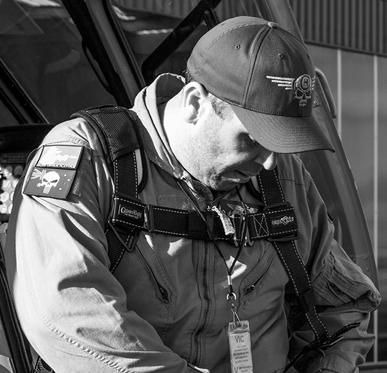
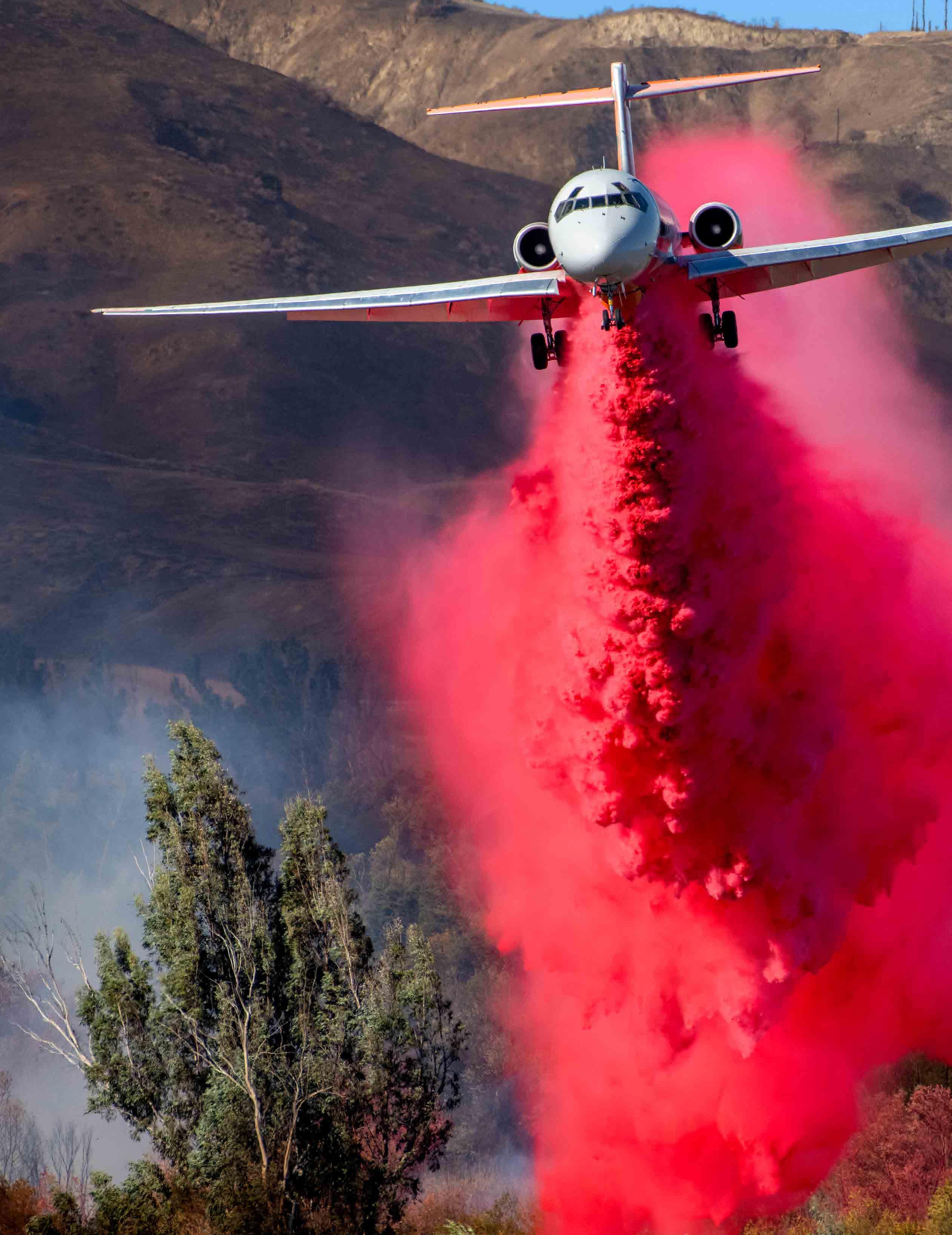
In my years in this seat, I have seen some stellar examples of individual training provided by several companies. It is, however, not a national standard because no national or international best practices or training standards have been set for the industry.
I know that I fall back on examples from associations like the Airborne Public Safety Association (APSA), which provides annual training for public safety professionals; there are other stellar examples out there in the aviation field, like the training, accreditation, and auditing services offered by organizations like the Commission on Accreditation of Medical Transport Systems (CAMTS). They cater to the air medical industry.
CAMTS focuses more on the medical side of air medical transport. However, the organization's focus on aviation safety and the training that the organization provides at its annual Air Medical Transport Conference (AMTC) is substantial. Like the offerings from APSA, it shows a glaring hole that our industry currently has where we could do better.
While I believe that creating an entity that can provide all of these services plus the industry reputation on a national level is several years away at best, I think there is still a massive opportunity for an entity in the private sector. Or even multiple companies to seize a business opportunity to provide a service that would undoubtedly be very successful.
Several companies are providing pieces of that training pie, be it flight simulators, virtual reality fire drop simulations, sandbox training, or other training components. Most companies rely on putting all those pieces in place to cobble together a comprehensive training syllabus within their specified training period for each company.
With the diversity of our industry and the types of aircraft used, the task is enormous, but like eating an elephant, the task could be completed
THE DROP Ryan Mason ryan@aerialfiremag.com
the same way - one bite (or aircraft type) at a time. Before anyone says it, I am aware that I am looking through rose-colored glasses at the problem, and I understand that the logistics of providing training on a large scale can be daunting.






There is, however, an opportunity that can be capitalized on. I think it would benefit the entire industry that, in the long term, will hopefully form the building blocks to what could become something as complex and well thought out as what an organization like CAMTS provides the air medical industry.

It still somewhat bewilders me that in 2022 we as an organization still do not have an overall industry representation like the air medical or public safety arena, being that both of those industries have existed just about as long as aerial firefighting and members from those industries banded together over fifty years ago and realized the need for representation and training for their industries. However, our industry still struggles to get organized, even as we continue to lose good people every year.
I am not naive enough to believe that we can solve all the problems of the industry, but I know that by providing more training opportunities to pilots and ground crew alike, we can sure as hell take a stab at making a difference. Call me idealistic, but I want to see everyone go home at the end of every season, not see how many GoFundMe campaigns have been created to care for those left behind.
Safety in this industry is like an itch that needs to be scratched constantly. Without an organized approach to training provisions, we are only as good as each company and each pilot's approach to safety. As one industry, however, we might just make a dent and be able to provide, through knowledge and experience, some learning material that could save a life or two down the line.
Fly Safe.
aerialfiremag.com | AF 7 24 Hour AOG Field Service Services we provide for the TPE331: Complete Overhaul Hot Section Inspections Gearbox Inspections Complete Test Cell Service - Including Engine R&R 24 Hour AOG Support Services we provide for the GTCP36: Hot Section Inspections APU Repair Compressor Carbon Seal Replacement Heavy Repair Maintenance Training

 A Columbia Helicopters CH-47 fights the Fairview Fire in California. Photo by Mike Murawski.
A Cal Fire S-2 drops on the Fairview Fire in Hemet, California. Photo by Marty Wolin.
A Columbia Helicopters CH-47 fights the Fairview Fire in California. Photo by Mike Murawski.
A Cal Fire S-2 drops on the Fairview Fire in Hemet, California. Photo by Marty Wolin.


AERIAL FIRE PICS
A Titan Aerial Firefighting AT-802 fights a fire in Greece. Photo by Arnaud Blanvin.
A Lohman Helicopters Bell 205 lands at Chico Airport in California. Photo by Zack Smith.

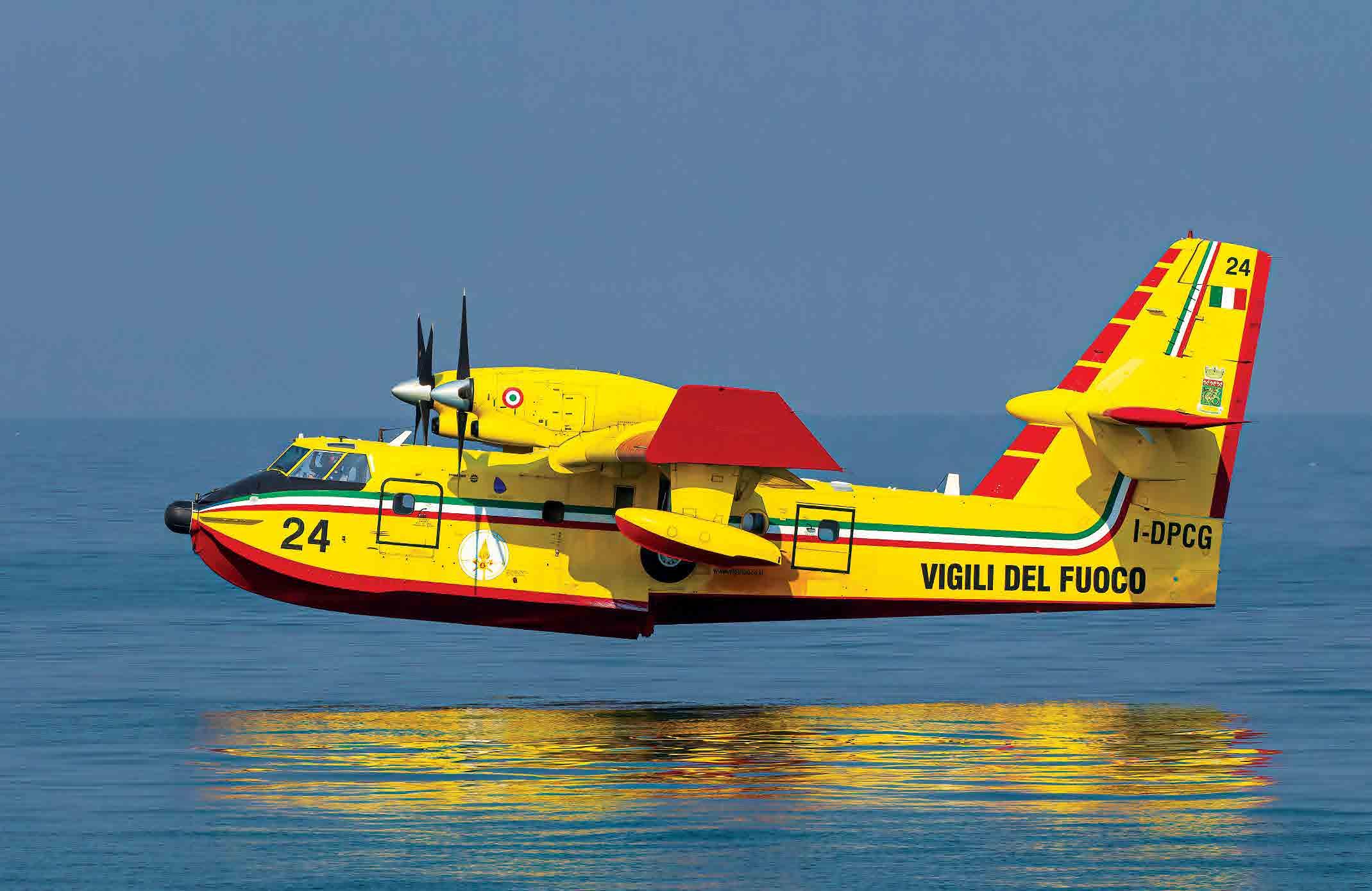 A Vigili Del Fuoco CL-415 prepares to scoop a load in Italy. Photo by Carlo Francesconi.
A mass of helicopters on the way in to drop on a fire in Spain. Photo by Fernando Rodriguez Cubero.
A Vigili Del Fuoco CL-415 prepares to scoop a load in Italy. Photo by Carlo Francesconi.
A mass of helicopters on the way in to drop on a fire in Spain. Photo by Fernando Rodriguez Cubero.


AERIAL FIRE PICS
An Erickson Air Crane drops on the Daisy Mountain Fire. Photo by Curt Porter.
A sunset picture of Aeroflite Scooper 263 in Great Falls, Montana. Photo by Michael Redwine.

 Santa Barbara County’s Copter 964 fights the Pantera Fire, its first assignment in California. Photo by Keith Cullom.
An Australian Pay’s Aviation Fire Boss comes in for landing in Greece. Photo by Kostas Marmarelis.
Santa Barbara County’s Copter 964 fights the Pantera Fire, its first assignment in California. Photo by Keith Cullom.
An Australian Pay’s Aviation Fire Boss comes in for landing in Greece. Photo by Kostas Marmarelis.


AERIAL FIRE PICS
Erickson Aero Tanker 107 fights the Fairview Fire in California. Photo by Ryan Grothe.
Conair Tanker 44 takes off from Penticton, Canada. Photo by Mike Biden.
Pratt & Whitney Canada Launches its New Services Hub – Guiding Customers Towards the Right Maintenance Offerings for their Engine
Pratt & Whitney Canada announced at the NBAA show in Orlando, Florida, October 17th, 2022, the launch of its new self-serve digital tool called the Services Hub, designed to guide customers through the process of selecting the right P&WC maintenance services and solutions online based on their engine and aircraft model as well as lifecycle stage. With more than 70 different tailored aftermarket offerings to support the P&WC-powered flying population of over 66,000 engines in service, the Services Hub makes choosing engine maintenance solutions and services simple and easy.
“The Services Hub is a part of the ongoing aftermarket digital transformation at P&WC to enhance the customer experience,” said Irene Makris, vice president, Customer Service, P&WC. “With a growing portfolio of offerings that support every stage of the engine lifecycle, we continue to find ways to make finding the right maintenance solutions for customers’ engine and aircraft easy and seamless.”

With this user-friendly self-serve digital tool newly launched on the company’s website, customers are guided through a series of brief, simple questions identifying the aircraft and engine model, as well as the engine’s total time since entering service. Based on this information, the Services Hub will then show the most applicable maintenance solutions and services tailored to the customer’s engine and lifecycle stage.



“Acting as a personalized online ‘concierge’ for customers, the Services Hub enables them to rapidly filter and identify the products or services that are right for them,” said Makris. “Another benefit of the tool is that it helps pair customers with a P&WC sales manager in their region, who can answer any further questions about our services and provide individual guidance.”
The new Services Hub responds to aviation customers’ demands for self-serve capabilities and digital resources that can be accessed anytime, anywhere, using a variety of digital devices.
AF 14 | aerialfiremag.com
FIND MAINTENANCE SERVICES FOR YOUR P&WC ENGINE OR APU IN A FEW SIMPLE STEPS SELECT YOUR AIRCRAFT AND ENGINE MODEL SELECT YOUR SERVICES FOR MORE INFORMATION COMPLETE THE FORM AND GET IN TOUCH Wheter you have a new or mature P&WCpowered aircraft, find the right maintenance solutions based on your engine or APU model and lifecycle stage. P&WC has more than 60 maintenance products and services to choose from depending on your engine model or APU. Our experts are available to answer any questions and provide you with more information about the services you choose.
POWERING THROUGH
Let’s face it. This job’s not for everyone. Aerial firefighting demands nerves of steel and the power to fly at peak performance. The PT6 turboprop continues to be the engine of choice – built for full-load takeoffs in extreme hot and high environments, all day, every day.
MORE AT PWC.CA/PT6

LEARN
Bridger Aerospace Appoints Eric Gerratt as Chief Financial Officer

Bridger Aerospace Group Holdings, LLC announced on October 6th, 2022, that the company has appointed Eric Gerratt as Chief Financial Officer. The announcement comes as Bridger prepares for its planned merger with Jack Creek Investment Corp. (“Jack Creek”) (NASDAQ: JCIC), a special purpose acquisition company, and subsequent listing on NASDAQ.
“Bringing on a CFO with public company experience was important as Bridger makes this transition,” said Tim Sheehy, the Company’s Chief Executive Officer. “Eric brings extensive financial reporting and management experience to our company, as well as acquisition and integration expertise, having helped grow his former company to nearly $1.0 billion in revenue. We look forward to him being a valued addition to the Bridger team as we expand throughout North America and globally to meet the rising demand for critical aerial firefighting services.”
Eric Gerratt joins Bridger from US Ecology, a leader in environmental services, where he was Executive Vice
President, Chief Financial Officer and Treasurer. Gerratt spent 15 years with US Ecology until its recent acquisition by Republic Services, during which time US Ecology’s revenue grew from $166 million to nearly $1.0 billion.
Prior to joining US Ecology, he served as Vice President of Accounting for SuperValu, Inc., held various directorlevel accounting and finance positions at Albertsons, Inc., and spent six years with PricewaterhouseCoopers LLP. Gerratt is a Certified Public Accountant and holds a B.S. in Accounting from the University of Idaho.
“I am excited to join Bridger, a company that has a strong track record of financial performance and significant opportunities for growth as it prepares to go public. As climate conditions evolve and wildfires grow in number and severity, the Company’s fully integrated aerial firefighting solution is critical to saving property and minimizing economic and environmental damage. With Bridger’s unique positioning, the potential for value creation is tremendous, and I look forward to working with its experienced management team to expand these critical services.”



A Company *Requires a subscription for more than one address When fires are burning around you FireTrac Informs Under stressful catastrophic conditions, getting information should be easy and relevant to YOU. We provide optimized fire information based on your geolocation and addresses that are important to you*. Download the app today and get the information you need to stay safe! download the app now! Visit FireTrac at the CES 2023 show - Smart Cities
National Park Service Presents Aviation Awards
The National Parks Service recently presented aviation awards to aviation professionals within the NPS. The awards issued are listed below.
2021 National Park Service Excellence in Mentorship Aviation Award
This award recognizes an individual or organization who, through training and mentorship of aviation personnel goes above and beyond normal expectations to assist others in developing their personal or professional aviation growth.
Jordan Black – Wildland Fire Module Lead at Great Smoky Mountains National Park
Jordan gained qualifications as an NWCG Unmanned Aircraft Systems Pilot (UASP) and Aerial Ignition which allowed him to begin mentoring and training other interagency UAS pilots in these skillsets.
Nathan Gilmore, Missy Schwarz, and Cammy Roy –Helicopter Managers - BLM Alaska Fire Service (AFS)
All three individuals have provided mentorship in helicopter operations to many Alaska NPS employees over the years and developed NPS employees in the areas of Helicopter Crew Member and Helicopter Manager.
2021 National Park Service Tom Clausing Aviation All Risk (Hazard) Program Award
This award recognizes an individual, crew or program who through professional interactions with coworkers, cooperators, and patients while rendering all risk services promotes innovation, professionalism, and advancements in policy, procedures, techniques, and equipment to further aviation all-hazard programs.
Doug Kraus – Helitack Foreman at Yellowstone National Park
Doug proposed and implemented a change on the equipment of the park’s A-star 350 light helicopter to always carry the full component of short haul gear regardless of the initial mission profile. Less than 24 hours after the equipment change was implemented, Doug responded to an accident involving a smokejumper during an initial attack on the local national forest. Due to Doug’s recent decision to innovate and modify the ship’s configuration, rapid response to the accident site, exemplary wilderness emergency medicine skills and decision making at the scene, and the shorthaul proficiency of Doug and his team, the patient was short-hauled to an awaiting air ambulance for advanced medical care within 62 minutes of the initial call for assistance.
2021 National Park Service Aviator of the Year Award
This award recognizes an individual(s) who performed mission(s) of significant consequence or valor or has actively promoted the advancement or recognition of an NPS aviation program, mission, or service.
Forrest Rackham and Tyrel Matthews – Helitack Lead and Helitack Crewmember – Mesa Verde National Park
On August 1, 2021 the Mesa Verde Helitack crew was assigned to the Middle Fork Complex Fire on the Willamette National Forest for operational support of wildfire suppression efforts, to include their short haul capabilities. During the afternoon of August 2, 2021, the aircrew was notified that a firefighter assigned to scout the fire line had become entrapped. Since there were no viable egress routes to a safe area it was determined
AF 18 | aerialfiremag.com
that a short haul extraction was the only available means to rescue the firefighter. The firefighter had already dropped his gear and had trying to stay out of the path of the fire for quite some time and was nearing the point of exhaustion. Conditions for locating the firefighter were extremely difficult due to steep terrain, low visibility due to heavy smoke, thick canopy tree cover and tracking a moving target.Forrest and Tyrel were able to locate the individual and talk to him via radio, then provided detailed directions to an opening in the canopy and safely extract him when the fire was within 30 yards of the extraction location. This mission certainly saved the life or prevented serious injury of the firefighter, as the possibly of the firefighter becoming entrapped by the fire was highly likely. Forrest and Tyrel overcame a significant problem when their radio communication was lost between the two while they were serving as the short haul spotter and short hauler. However, they relied on their extensive training and utilized hand signals for communication until the rescue was completed.The training, coordination of aircrew, and quick thinking by Forrest and Tyrel were instrumental in the survival of the firefighter. They were able to demonstrate their individual skills and those of the entire crew during this incident, highlighting the beneficial aspects of short haul capable aircraft and aircrews.
2021 National Park Service Wright Brothers Aviation Safety Award

This award recognizes an individual or organization within the NPS at the park, regional, or national level who proactively promotes an open-minded attitude in the prevention of aviation mishaps and accidents, works diligently to correct and improve aviation safety deficiencies and communicates the actions and results to others.

Ryan Thrush – North Rim District Law Enforcement Ranger - Black Canyon of the Gunnison National Park/ Curecanti National Recreation Area
As the collateral duty park aviation manager, Ryan has shown tremendous leadership training the park’s staff to ensure they have the experience, skills, and qualifications to respond to very difficult situations. Ryan continues to share his knowledge and experience in aviation policy, procedures, and safety with everyone who supports the park’s operations. Ryan’s dedication is noticed and appreciated by all who know Ryan as he continues to go above and beyond his duties as a National Park Service law enforcement ranger in support of aviation operations.
aerialfiremag.com | AF 19
Helicopter Express Acquires S-64F Air Crane
Helicopter Express of Atlanta, Georgia, announced October 17th, 2022, an expansion of its fleet with the addition of an S-64F Air Crane helicopter.
The company acquired the aircraft from the model’s original equipment manufacturer, Erickson Inc., becoming the first commercial operator to purchase an S-64F from Erickson. With a maximum hook weight of 25,000 lb., the heavylift aircraft will bring a new level of capability to Helicopter Express’s already versatile fleet.

“Helicopter Express has a reputation within the firefighting and government contracting communities for continuously innovating with state-of-the-art equipment,” said founder and CEO Scott Runyan. “The S-64F will continue our tradition of supplying customers with the best tool for the job.”

Following its proven model of employing the best talent when introducing new types to its fleet, Helicopter Express reached out to the seasoned professionals at Intermountain Helicopters (IMH) for their expertise. IMH’s vast experience with the S-64 platform has enabled Helicopter Express to
assemble a supporting team with a combined 140 years of experience and 30,000 flight hours on the model.
Helicopter Express is among the world’s largest operators of several specialized rotary-wing platforms, with seven Eagle 407HP, six Bell 205A-1++ and four Kaman K-MAX helicopters in its fleet. The company operates these and Airbus H125/AS350 models for firefighting, search-andrescue, construction and other missions.
In 2013, it was selected by the U.S. Forest Service to stand up the agency’s first nighttime aerial firefighting program since the 1980s, safely reintroducing operations under night vision goggles to the Forest Service’s arsenal of wildfire suppression techniques.
“We are excited to now add an S-64F to our growing worldwide commercial operations,” said Danny Hoss, Helicopter Express’s vice president, commercial services. “Its unique heavy-lift capabilities will allow us to bring our safe and professional helicopter services to new missions and customers.”

aerialfiremag.com | AF 21 Contact Stephen Johnson, Global Sales Director (651) 328-7667 or sjohnson@firebossllc.com firebossllc.com SAVING LIVES, HOMES AND PROPERTY AROUND THE WORLD™ THE MOST ECONOMICAL AERIAL FIREFIGHTING SOLUTION
GPMS Announces John Byus as Director of Sales for the Americas
GPMS announced on September 6, 2022, that rotorcraft industry veteran, John Byus, has joined the company’s sales organization as the Director of Sales – Americas. His responsibilities will include expanding the Foresight customer base throughout the Americas and working with fleet operators to develop specialized solutions to address the intricate needs of their programs.


Byus brings more than 40 years of rotorcraft and aviation experience to GPMS. His career spans nearly every market segment, with positions ranging from a mechanic, pilot, inspector, instructor, and several Director of Maintenance roles to a 15-year stint as Sales/Key, Account Manager with Airbus Helicopters. Byus adds a unique perspective to the sales organization that Todd Powers, GPMS VP of Sales, says will help customers in the Americas with larger, complex fleets and operations realize the benefits of Foresight.
“John is very well known throughout the rotorcraft industry, especially with the larger operators and programs,” said Powers. “He has the perfect blend of experience, understanding, and insight to show our customers how advanced our Foresight system is, how easy it will integrate into their operations, and most importantly, how it will make their programs more efficient, sustainable, and costeffective.”
“I am really excited to join GPMS,” said Byus. “I am super impressed by the team, the direction of the company, and how they have developed an advanced HUMS that is so user-friendly. Foresight will change how the industry sees and utilizes HUMS.”
Additionally, Byus mentioned he was attracted to GPMS because of its potential to really make a difference and establish HUMS as an essential tool for aviation maintenance. “I’ve been in the industry long enough to see the early adoption of HUMS and the progress made since then,” he said. Byus revealed that while the industry has
made great strides, what GPMS has created with Foresight is something quite special. “It blew me away when I first saw it,” he said. “It’s more than 50% lighter, less expensive, benefits from 20 years of technological advancement, and provides a touchless experience. This means that the same operators who have required HUMS on their medium-to-large aircraft now have a real option with Foresight, especially for their lighter, typically single-engine aircraft.”
AF 22 | aerialfiremag.com
WILDFIRES.

FIREFIGHTERS.
The Future of Aerial Firefighting: The Dash 8-400AT Fast, fuel efficient and tactically flexible. A modern airtanker with a 10,000 litre / 2,642 US gallon capacity to drop water, retardant, or gel over diverse geography. Setting the standard for Next Generation aircraft with OEM support to keep the firefighter flying for decades.
 Photo: Alexandre Dubath
Photo: Alexandre Dubath
conair.ca

SUPPRESSING
SUPPORTING
Rotak Partners with Helitak for New CH-47D Chinook Tank

Rotak Helicopter Services has partnered with Australian firefighting equipment designer, Helitak Firefighting Equipment, to develop a new mission for the Boeing CH-47D/234 CHINOOK as a next-generation, multi-purpose fire-fighting platform.
As a US-based operator of the CH-47 Chinook, Rotak worked closely with Helitak to develop the innovative FT12K CH-47, a lightweight 11,350-liter (3,000 US gallons) collapsible belly-mounted fire suppression tank specifically designed for the helicopter.
Rotak will be performing flight testing in Q1, 2023, and the first Chinook equipped with the FT12K will be on static display at the upcoming HAI Heli-Expo in Atlanta, Georgia, from March 6-9, 2023.

The Chinook is the global leader in high-capacity available payload, the largest rotary cargo area availability, and the added advantage of civilian and firefighting-specific passenger transport services and emergency and medical evacuation options.
Its next-generation avionics and dynamic cabin layout mean that in addition to dropping water, the 234 CHINOOK will be capable of transporting crews of up to 44 firefighters to the front lines of wildfire events.
The Chinook’s rear-loading cargo ramp and spacious cabin also offer operators the ability to quickly reconfigure the aircraft from passenger and equipment transfers to cargo hauling or medevac services.
The new design will deliver the lightest empty weight of any Chinook aerial fire suppression tank and the quickest installation and removal times on the market whilst retaining the availability of internal cargo space. The tank could be transported in the cabin whilst ferrying or Hook operations are undertaken.
Rotak General Manager, Ely Wood, said, “We are excited to partner with Helitak to adapt the dynamic capabilities of the Chinook for a new market. This turn-key firefighting platform is industry-first and combines the versatility of the helicopter with Helitak’s innovative tank design.
“Our team worked with Helitak to craft a solution for the civilian Chinook for immediate deployment into fire-fighting missions across the globe, and we are extremely proud of the results that have been achieved.”
Founder and CEO of Helitak, Jason Schellaars, said, “It is a privilege to be partnering with Rotak to certify our FT12K for the CH-47 Chinook.
“Building our relationship with Rotak is a major milestone for the future of our operations and is another step towards making our tanks more readily accessible in the fight against wildfires.
“This build and certification of the FT12K enhances our reputation as a design team capable of overcoming the issues of fire tank construction and certification.”
This new fire-fighting platform combines the unique capabilities of the CHINOOK with Helitak’s robust, carbon fiber FT12K system, which can be installed or removed in under 25 minutes and is equipped with a hover pump that achieves a fill time of fewer than 60 seconds.
The tank’s construction will be the lightest in the market and allows for greater liquid carrying capacity, which can be dropped in easily configurable patterns through integrated controls. This means that while on-site at an event, the aircraft can support fire-fighting ground crews with continuous water or retardant drops.
AF 24 | aerialfiremag.com


aerialfiremag.com | AF 25 Why TAE Aerospace is the largest authorized Honeywell MRO in world • Unmatched pricing on OEM parts • Largest OEM parts holding to assist with quicker turnaround times • LRUs, component and fuel nozzle sales and support • Consignment stock • In-house repair capability • Lease and exchange engines • AOG support • Global sales, field service and technical team ready to support your next engine or component event. Unmatched pricing for OEM parts Other authorized MRO providers and non-authorized facilities are being forced to pass on the significant price increases we see in the economy today. As the only globally-licensed TPE MRO provider, TAE Aerospace can continue to deliver the lowest pricing to our customers. Our global capability also means you will benefit from our large stock holdings, in-house LRU capability and the only Honeywell Authorized Rental engine pool. For example, the current Honeywell 1st stage wheel (P/N 3108164-4) list price is $174,831.* As a TAE Aerospace customer, you will pay $53,000. That’s a difference of almost $122,000! Talk to us today about how we can offer a cost-effective solution for your next engine or component event. Contact Bruce Hubler on +1 (208) 229 8340 or email bruce.hubler@taeaerospace.com As the largest Honeywell TPE Channel Partner globally, TAE Aerospace can provide the lowest pricing on OEM parts for our customers. *USD pricing correct at time of publishing.
Ibama Introduces the Sling Dragon Into Aerial Firefighting Strategy

The Brazilian Institute of Environment and Renewable Natural Resources (IBAMA) conducted an extensive and comprehensive annual Forest Firefighting Training program on September 6th, 2022. The event was held in Brazil’s capital city of Brasilia at the National Park and included theory and practical elements. This year’s training program introduced SEI’s SLING DRAGON, an essential device for the integrated management of controlled burns. The SLING DRAGON underwent extensive testing and received Technical Release in time to train IBAMA pilots with the new aerial ignition equipment. IBAMA’s three SLING DRAGON units are the first to be used in South America.
SEI Industries developed the SLING DRAGON to increase safety and performance by removing the machine inside the aircraft and slinging it from the helicopter cargo hook with a set of SS suspension cables. The ignition occurs outside the aircraft, safely operated by the pilot with a hand control switch. It is separate from the helicopter flight deck, eliminating the need for a crew operator. With a muchincreased capacity of 5,000 spheres and a seven-speed setting, the SLING DRAGON is equipped with a GPS tracker that records the coordinates of the drop on a MicroSD card, allowing users to view a map of their burn area easily.
“The Sling Dragon will exponentially increase our prescribed burning capability, which is a fundamental element of IBAMA’s preventative program to reduce the severity of wildland fires – especially in large, protected areas such as
indigenous and conservation lands. The addition of the Sling Dragon to our toolbox will bring more efficiency and safety to the aerial ignition operations allowing quick access to unreachable and risky areas for the ground crews,” explained Everton Almada Pimentel, Environment Analyst – Aerial Operations, IBAMA.
The Annual Forest Firefighting Training program (a weeklong event, repeated twice during July) is coordinated by Prevfogo (The National Center for the Prevention and Combat of Forest Fires), a division of IBAMA responsible for policy, prevention, and fighting forest fires in Brazil, and COAER, the Institute’s Air Operations Coordination. COAER’s training strategy included instruction for ground operations, controlled burns, and Bambi Bucket training. Brazil’s most experienced aerial firefighting operator, HELISUL Taxi Aereo, provides pilots with the opportunity to repeatedly fill the Bambi Buckets at different water sources and extinguish fires set by ground and aerial crews on designated grass fields.
“Every year, IBAMA performs multiple operations in Brazil to fight and prevent forest fires. Due to the aircraft multi mission requirement, the Bambi Bucket is the ideal firefighting tool. It is flexible, light, and easy to install and remove from the helicopter, providing flexibility for the pilot to support other operations and quickly return to firefighting without shutting the engines down.”
comments Commander Robinson Bordin, Director of Operations, HELISUL.

AF 26 | aerialfiremag.com
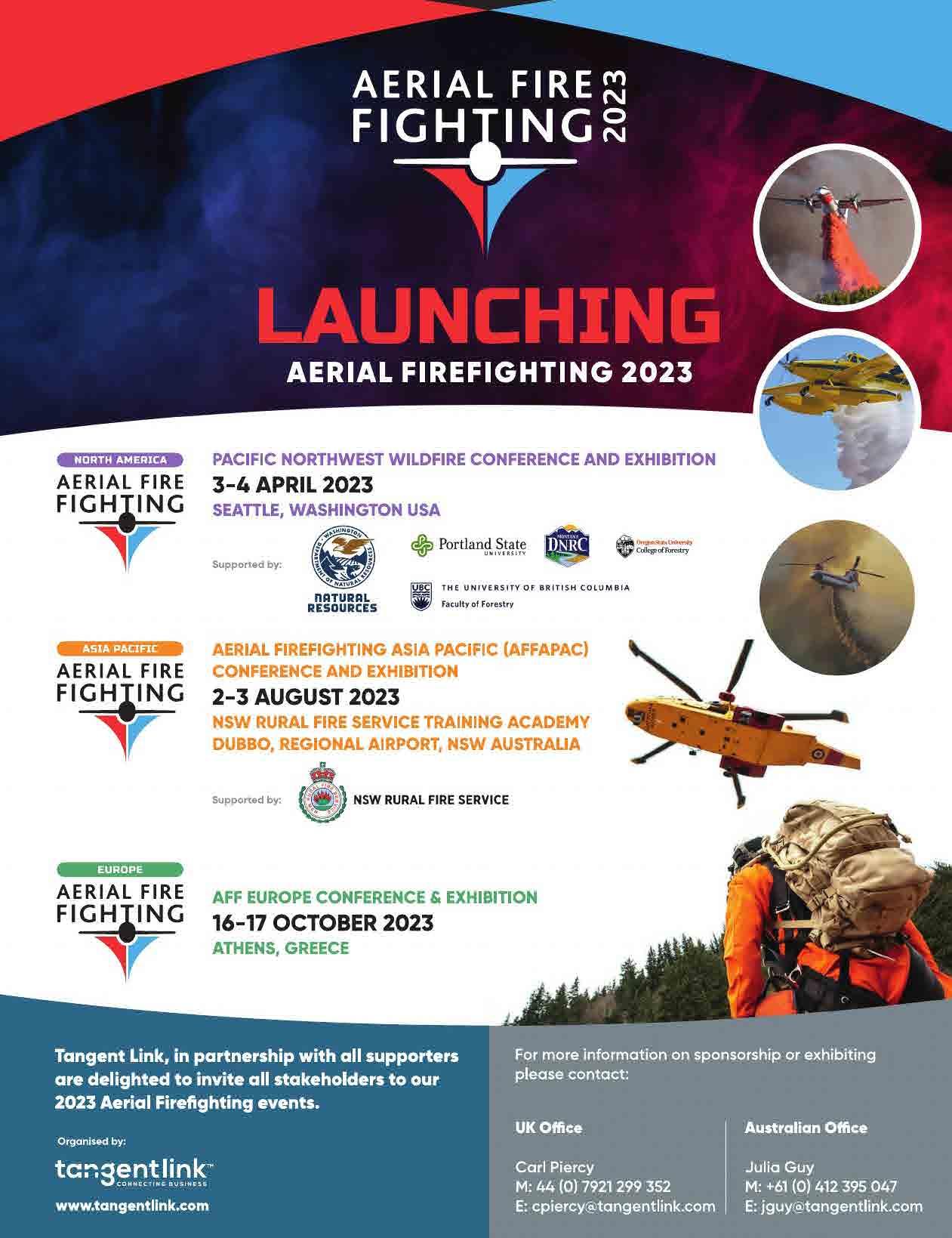
Embraer Concludes Flight Tests for Firefighting Capability for the C-390 Millennium
Embraer announced September 5th, 2022, that the company has successfully completed the flight test of the certification campaign for the Modular Airborne Fire Fighting System (MAFFS II), which provides the C-390 Millennium with the required capability to perform firefighting missions.
The tests, carried out at the Embraer facility in Gavião Peixoto, São Paulo State, in Brazil, represent an important advancement in the certification campaign of this capacity by the Brazilian Military Certification Authority (IFI). After certification, the firefighting capability will be available to aircraft’s operators.

The MAFFS II is a firefighting system capable of deploying up to 3,000 gallons of water (approximately 11,300 liters), both with and without fire retardant, according to the standard ground cover level criteria and in various types of terrain. Designed to interface with the aircraft’s Cargo

Handling System (CHS), the MAFFS II is rapidly installed on the cargo compartment of the airplane, using only its own trailer.
The system requires only aircraft power to operate. The conclusion of these tests, which included several in-flight water-drop, proved the system’s ability to integrate with the aircraft, and demonstrated excellent aspects of flight quality and maneuverability, which are extremely necessary for this type of operation at low speeds.
The C-390 Millennium and its air-to-air refueling configuration, the KC-390, are the new generation of multi-mission military transport aircraft delivering unrivaled mobility and cargo capacity, rapid re-configuration, high availability, improved comfort, as well as optimal management of reduced operational costs through its life cycle, all in a single platform.
AF 28 | aerialfiremag.com





TO ALL WILDLAND FIREFIGHTERS Golden Eagles Hotshots THANK YOU
Sikorsky UH-60A Black Hawk Helicopter being prepped for modification at Arista Aviation Services in Enterprise, AL.
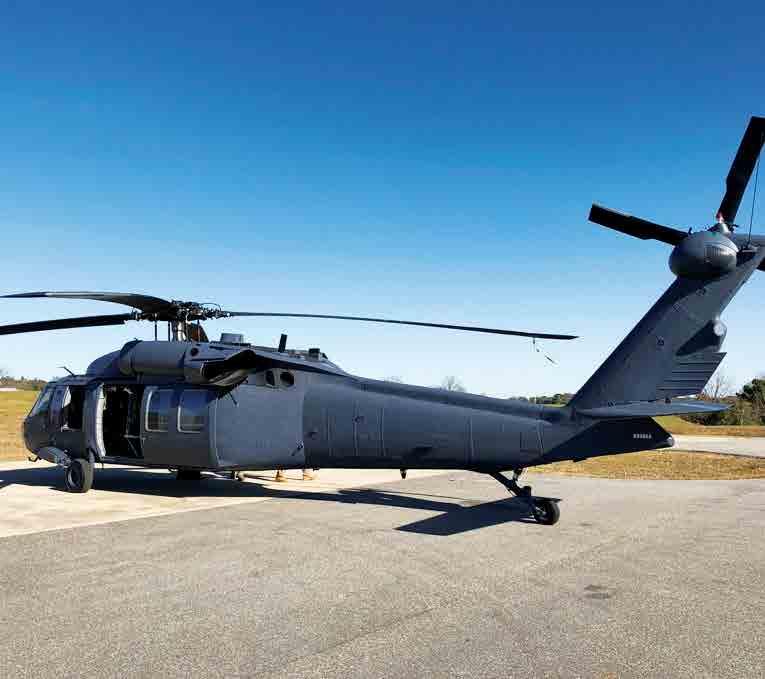
Arista Aviation Services, a counted-on provider of rotary wing aircraft repair, overhaul, and modernization – with specialization in the Sikorsky UH-60 Black Hawk helicopter – announced on September 1, 2022, that the company had been awarded a contract to provide six firefightingcapable Black Hawks to the Portuguese Air Force (Força Aérea Portuguesa), besting Industry OEMs Leonardo and Bell Helicopter. The contract includes the delivery of six aircraft over the next three years, training for six pilots and 21 mechanics, and five years of onsite maintenance and logistical support. With the addition of these helicopters, Portuguese Air Force aerial firefighting capabilities are greatly enhanced, as each Arista-modified Black Hawk will have the ability to quickly transport 12 firefighters and over 750 gallons of water to rural areas when needed.

Arista President Rich Enderle said, “The Black Hawk has proven itself around the world as an extremely versatile airframe, and we are proud to offer our customers a wide variety of options to help ensure their mission success. Our aerial firefighting configuration is highly successful in fighting U.S. wildfires in California and other western states, and we are thrilled to be able to internationally introduce these lifesaving platforms to Portugal.”
Arista is an FAA Part 145 Repair Station and provider of MRO services with facilities strategically located in Alabama and California. Arista specializes in depot-level repairs, custom painting, custom avionics upgrades, structural enhancements, and repairs as needed to extend the useful life of legacy helicopter platforms.
AF 30 | aerialfiremag.com
Coastal Air Strike’s agile, forward-attack SEAT (single engine air tanker) and Fire Boss (amphibious SEAT) aircraft are your best chance to contain small wildfires, to prevent them from becoming big wildfires. Their ability to operate from virtually all airports, ranging from large tanker bases to remote airstrips – even reloading at portable retardant bases – along with the Fire Boss’s ability to scoop nearby water sources, proves them invaluable.

We can take the heat

WHEN WILDFIRES STRIKE, YOU NEED TO STRIKE BACK
307 E Cowboy Way, LaBelle Regional Airport, LaBelle, FL 33935 863-612-0080 coastalairstrike.com
CRAYMER’S COUNSEL
Robert Craymer - robertc@covingtonaircraft.com
Unscheduled Events - Sudden Stoppage and Prop Strikes
I have written before about unscheduled events (exceedances). This time under the title of unscheduled events, I will look at prop strikes and sudden stoppage. These two events are interconnected in the engine maintenance manuals, although there are some differences once we get into the overhaul manual. Here are a few things from the engine maintenance manual to keep in mind. If your engine must be removed because of an unscheduled event or circumstance, you may be asked to provide additional information in the form of a completed SIL GEN135. This Pratt & Whitney Canada service information letter (SIL) is used to provide data about the event. Photos of the event may also be requested. If you have a prop strike or sudden stoppage, take pictures of the airplane overall, the propeller and the engine before removal. The more data provided, the better. You want to leave as few questions as possible.

What defines prop strike or sudden stoppage? A prop strike is a rotating prop hitting an object that causes a speed variation (NO stoppage) and blade damage, OR a stationary prop is hit by a moving object that causes blade damage. On the other hand, a sudden stoppage is when a rotating prop contacts something that causes the prop to stop. Seems simple enough, right?
After defining these events, let's now separate the two from one another. We can focus on the prop strike first. Our maintenance journey begins right after you suffer a prop strike. The maintenance manual asks, what was the Ng during the event? We need to distinguish between minor and major types of damage. Did the incident happen below the Flight Idle Ng or while the engine was shut down? Is the blade damage minor per the propeller maintenance manual? If you verify the answer to these questions is "yes," you may not have to pull the engine yet. If your event fits this profile, you might have to run the engine and check the oil filter and

chip detector, followed by a monitoring/inspection sequence until you can return the engine to full service. However, if metal is found during the monitoring phase or a vibration begins, you will have to remove the power section for inspection. Therefore, even if your event is minor, you must document and advise your insurance company.
What if you were above flight idle or significant damage was done to the prop blades? Prop strike on a power line? Remove the power section and send it in for repair. Before pulling the power section, you will want to inspect the entire engine closely - looking for cracks, twists or distortions. Pull the starter/generator and look at all the accessory pads on the accessory gearbox. Check the FCU and pump to ensure they didn't receive any damage. These accessories can sustain damage in the event of a hard prop strike. If a wire was hit that wasn't a guide, support or telephone wire, you will want to look for evidence of electrical discharge, including burn marks at the C-flange and the compressor turbine disk. The C-flange is the "split" point for the gas generator and the power section.
AF 32 | aerialfiremag.com
Sudden stoppage of the propeller is a little like the previous inspection. Remove the power section and send it in for repair. Inspect the balance of the engine for damage. One thing added in the maintenance manual is to rotate the compressor. You want to listen for audible scraping, rubbing or interference. We found the compressor to be rubbed on some severe sudden stoppage events. When the engine is assembled, the tolerances of the compressor and other components are very tight. Think of the force that the engine was subjected to. That force can shift parts spinning quickly, causing rub and damage.



When the power section has been received in the shop, the work really begins. We shift our focus from the maintenance manual to the overhaul manual. There are procedures in the overhaul manual that tells every engine shop what to disassemble and inspect. There have been some changes to these procedures over the years. One of those changes includes replacing the prop shaft if a sudden stoppage occurs. The most recent change is to perform a heat treatment for the exhaust duct. Most of the internal components in the power section require an overhaul level inspection. This even includes the power turbine disk(s) and blades. There are some automatic replacement items like the before-mentioned prop shaft and the #6 and, if applicable, the #7 bearing. ➤


aerialfiremag.com | AF 33 STC#SA00961CH Hydraulic Firegate ● APPROVED AROUND THE WORLD! ● PILOT IS ALWAYS IN CONTROL ● REDUCED PITCH - UP ● SIMPLE, USER FRIENDLY & RELIABLE ● SHAPE, SIZE AND DENSITY OF THE DROP PRODUCED TO MAXIMIZE FIRE CONTROL ● FULL SALVO DROP IN LESS THAN 2 SECONDS ● 4 LEVEL DUMP CONTROL ● APPROVED ALL MODEL OF AIR TRACTOR & THRUSH 660/710 ● 20 YEARS PROVEN TRACK RECORD OF RELIABILITY & SAFETY ANAC#2021S08-10Hatfield Fiire Gate SALES@TURBINECONVERSIONS.COM TEL +1 616-837-9428 CONTACT US AT : WWW.TURBINECONVERSIONS.COM
Not going to lie; these changes have led to longer shop turn times on prop strikes and sudden stoppage power sections. Your shop has to do an overhaul level inspection on these components, which takes time.

There is one other item that must be mentioned. The first section of the overhaul manual sudden stoppage/propeller strike area lists several scenarios where the overhaul manual work scope doesn't apply. This doesn't just apply to engines under warranty. This is for all engines. Some of these scenarios are: if the event took place on takeoff or landing or if drive train components are sheared. The manual also noted that if the operator fails to give sufficient information about the event, the engine repair must be done as a "worst case." So, what does your shop do if the work scope in the overhaul manual does not apply to your incident? The process now involves a request sent to Pratt & Whitney Canada engineering. They review all the information provided and decide what the engine requires for a return to service.

We reference this as a request for evaluation or RFE.
I sincerely hope no one hits anything with their airplane or prop. If it happens to you, contact your insurance company— document as many details about the incident, including pictures. Determine with your mechanic and engine shop what level of inspection is required based on the information in the engine maintenance manual. If your engine must go in for repair, realize the engine shop is working as hard as possible to get you back in the air as quickly as possible.
Robert Craymer has worked on PT6A engine and PT6A powered aircraft for the past three decades, including the last 25+ years at Covington Aircraft. As a licensed A&P mechanic, Robert has held every job in an engine overhaul shop as well as being an instructor of PT6A Maintenance and Familiarization courses for both pilots and mechanics. Robert can be reached at robertc@covingtonaircraft.com or 662-910-9899. Visit us at covingtonaircraft.com.
AF 34 | aerialfiremag.com








aerialfiremag.com | AF 35 www.southwest-airmotive.com 4801 North Tumbleweed Road • Eloy, Arizona 85131 520-466-7274 WE DO IT RIGHT! We’re the small shop that’s huge on service - unsurpassed in workmanship. We’re your experts for complete service to the full line of Pratt & Whitney PT6A & PT6T Engines. Overhaul Repair Test Cell Capabilities DOI Certified MACH 1/LH050 MACH 2/LH250 BOSE A20 ANR/Blutooth CEP Blu Link II Fidlock Chinstrap Lightest Weight Longest shell life in the industry Experts in custom fit for maximum comfort “Work with the BEST, your head deserves nothing less” (904) 770-7154 meritapparel.com SCAN ME
Bell Announces a Signed Purchase Agreement for First SUBARU Bell 412EPXs Sold in Europe
On September 29, 2022, Bell Textron Inc. announced a signed purchase agreement for two SUBARU Bell 412EPX helicopters to the Republic of Croatia’s Ministry of Interior. This marks a significant milestone in the region as the first purchase agreement for SUBARU Bell 412 EPXs in Europe. The expected delivery date of the aircraft is October 2023.

“The SUBARU Bell 412EPX adds increased payload capabilities to the world-renowned Bell 412 platform, and this agreement continues to expand its reputation,” said Duncan Van De Velde, Bell’s managing director, Europe. “We are thrilled to bring the most modern version of the Bell 412 platform to a European customer and showcase its capabilities.”
The Republic of Croatia’s Ministry of the Interior deals with the tasks related to criminal, border and special police activities and other activities related to civil protection, firefighting, fire protection, production and trade in explosive
substances and weapons, private protection, detective affairs, and mine action.

“The Ministry of Interior is honored to be the first European customer to sign a purchase agreement for the SUBARU Bell 412EPX,” said Ph.D. Davor Božinovi?, Minister of Interior, Croatia. “We look forward to utilizing its unique capabilities and durability to protect and defend the citizens of Croatia.”
Certified in 2018, the SUBARU BELL 412EPX has a maximum internal weight of 12,200 lbs, an external weight of 13,000 lbs, and up to 5,000 lbs of goods with a cargo hook. The aircraft enables large cargo and personnel transportation with its ability to carry up to 5,385 lbs. The Bell 412EPX benefits from a robust main rotor gearbox dry run capability and increased mast torque output at speeds below 60 knots, providing operators the ability to transport more supplies and perform operations more efficiently.
AF 36 | aerialfiremag.com

aerialfiremag.com | AF 37
GPMS, Flightcell, and Blue Sky Network Partner to Meet US Forest Service MATOC Requirements

GPMS International, Flightcell, and Blue Sky Network jointly announced on September 26, 2022 a combined solution featuring their industry-leading technologies that creates a fully compliant, lightweight, cost-efficient option for operators looking to bid on the recently released U.S. Forest Service Multiple Award Task Order Contract (MATOC) firefighting contract.
Executives from the companies explained that many operators are having difficulty finding workable solutions to satisfy the new requirements in the USFS contract. By pairing Flightcell’s & Blue Sky Network’s enabled communications, flight following, Additional Telemetry Unit (ATU), and cockpit audio recording with GPMS’s advanced Health and Usage Monitoring System, the combined package meets new USFS requirements, including the “modern aircraft” specification for HUMS.
“After many discussions during the HAI Firefighting and Aerial Firefighting shows, operators, told us that they are looking for a solution to meet the new USFS requirements without overburdening their aircraft with additional weight or complexity or stacking single system costs onto their budgets,” said Todd Powers, GPMS VP of Sales. “What we have created here with Flightcell and Blue Sky Network is a lightweight, economically efficient solution to bring aircraft into compliance and allow operators to compete for this new contract.”
Jason Hicks, VP of Business Development of Blue Sky Network, echoed the sentiment adding, “We’re excited to announce a combined solution that checks all the boxes, requires no development or certifications and is readily available today.”
The USFS Helicopter Support Services contract requires real-time communications, automatic flight following, ATU bucket drop data, and cockpit audio recording and Flight Data Monitoring (FDM) data. The new combined solution meets these requirements. It puts Flightcell’s DZMx Plus and Smarthub cockpit audiovisual recording onboard and, using
Blue Sky Network’s connectivity service and SkyRouter™ fleet management platform, data is ported via a dual Satellite/LTE modem, where operators get comms, ATU data, and flight following in real-time together with downloadable audio/video recording.
Completing the solution, GPMS’s Foresight MX system provides the in-depth flight and machine monitoring that are part of MATOC’s modern aircraft requirements for HUMS. Foresight provides engine and airframe vibration monitoring, engine performance monitoring and cycle counting, flight data monitoring with exceedance alerting, as well as rotor track and balance monitoring and adjustment solutions.
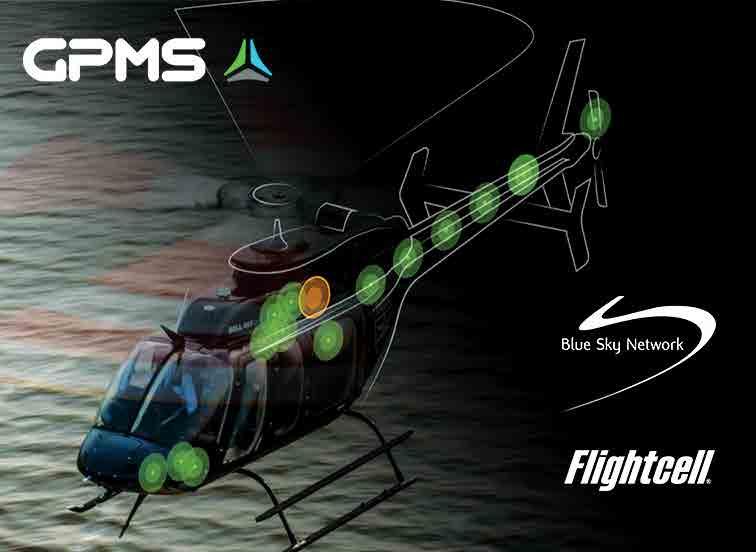
John Wylie, CEO of Flightcell, said, “The joint solution, in addition to helping North American operators meet USFS requirements, provides a powerful combination of communication, connectivity, and monitoring functionality for Operations, Safety, and Maintenance personnel. With Satcom, FDM, and HUMS, you really get the suite needed to enhance safety and optimize maintenance.”
The companies are excited to provide this combined solution and will work together to provide further enhancements in 2023.
AF 38 | aerialfiremag.com

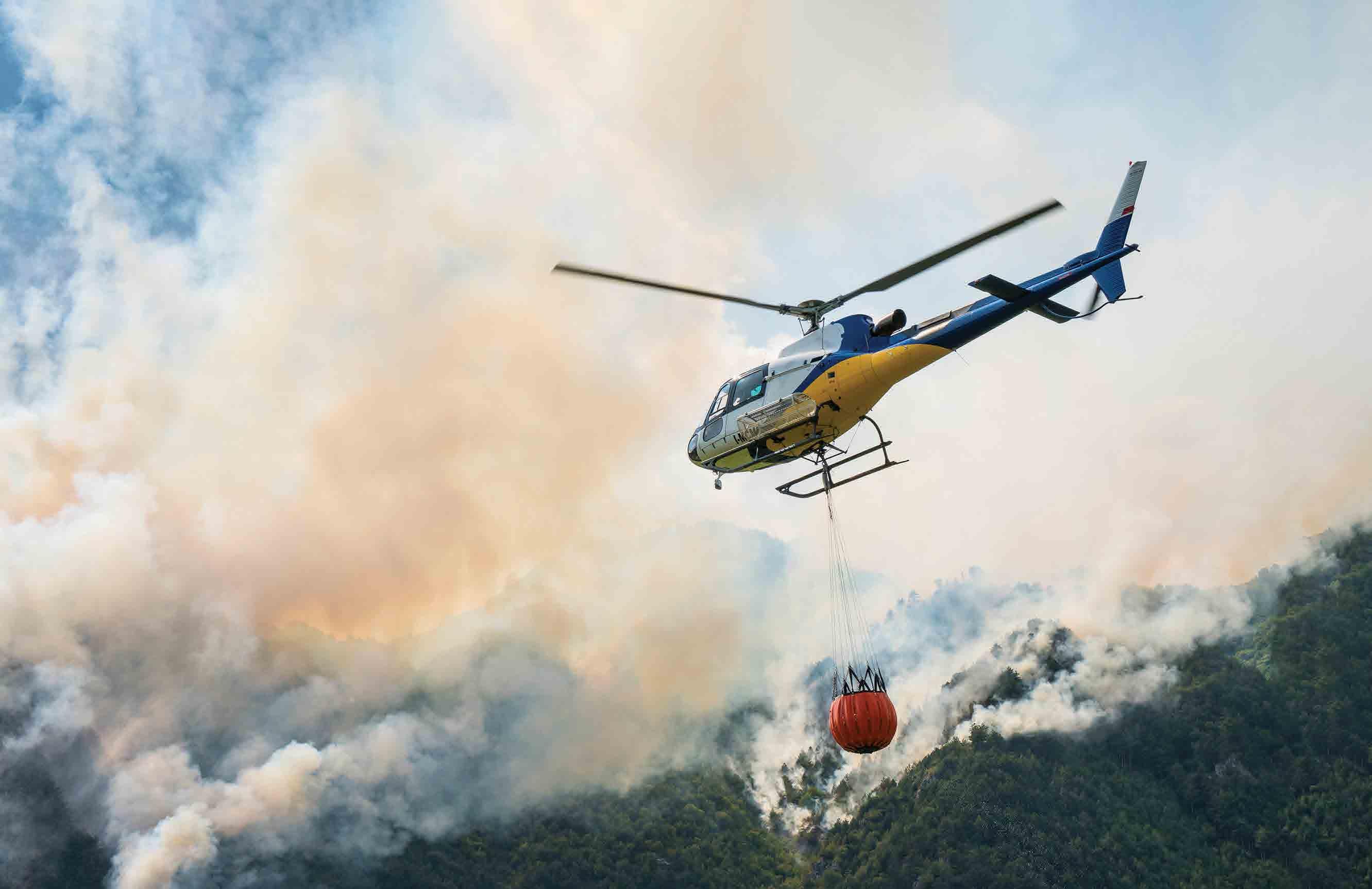
Helitak Awarded Advanced Technology Award at Queensland Premiers Export Awards

Queensland, Australia - Helitak Fire Fighting Equipment announced on October 5th that the company had been awarded the Advanced Technologies Award during an awards ceremony for the Premier of Queensland’s Export Awards.

The prestigious awards celebrate the very best of the state of Queensland’s exporters led by Trade and Investment Queensland.
The Premier of Queensland’s Export Awards is run in collaboration with Austrade and the Australian Export & Investment Awards. Helitak was chosen in a field of several other companies providing goods and services to the
international marketplace and will now go on to become finalists in the national Australian Export Awards.
“We are incredibly proud of our team; this is a testament to their hard work and dedication. Thank you to our local Sunshine Coast suppliers who are a wider part of this achievement, we wouldn’t be here without you, and of course, thank you to our customers for backing the Helitak team,” said Jason Schellaars, CEO and founder of Helitak Fire Fighting Equipment.
“A big congratulations to the other finalists and winners - its phenomenal to see the great businesses behind Queensland’s export success,” he continued.
AF 40 | aerialfiremag.com
Track






aerialfiremag.com | AF 41
and message your rotary, fixed wing and ground assets from anywhere in the world. Accurately record bucket fills and drops with zero pilot input, then receive this data from the aircraft in real time. Capture third-party data feeds, be it via radio, cellular, or satellite. And monitor all of it with our web-based common operating platform to give you a single view of the truth. Whatever your mission, we’ve got you covered. NO MATTER THE MISSION COVERAGE COMPLETE PROUDLY SERVING NAFC National Aerial Firefighting Centre sales@tracplus.com tracplus.com

HeliQwest Multi-National Operations
family
and

A
owned
operated business
since the 1990’s,
HeliQwest
has grown to be
a
large type
one helicopter operator
in the
aerial firefighting industry.
Story and photography by Ryan Mason
Running an aerial firefighting company is a complex task, but running a company with operations in two countries is a task few could pull off. However, that is precisely what Bob Chalifoux, his wife, Lisa, and two of his sons have accomplished over the last several decades.
History
Bob Chalifoux started his aviation career in Canada, eventually working up to taking a position with Okanagan/ Canadian Helicopters (which would later become the global oil and gas helicopter company CHC.) There, he began flying Jetranger/Astars/ Bell 212 and Sikorsky S61 and conducting seismic work where he would move seismic drill rigs in the mountains. This continued to improve his pilot skills thanks to the complex flying environment that led him to become somewhat of a specialist in the field over the years.
As with many companies, HeliQwest was founded on one part luck and the other part experience and taking a risk. After a falling out between the seismic company and Okanagan/Canadian, the seismic company approached Bob directly, asking him to take over the contract on his own.

Chalifoux turned to friend Michael OReilly, owner of Eagle Copters in Calgary, as he did not have a helicopter at the time. OReilly would lease him a Bell 205 to begin operations as a solo operator in Canada in 1994.
Things moved quickly for HeliQwest, with requests from the seismic company to add another aircraft the following year and the next several years following, which resulted in the company within four years now having 4 Bell 205’s in the fleet that would also work logging contracts in the winter months in Canada.
After several years in operation, and much frustration with unreliable ground crew, Chalifoux, who was ever the amateur engineer, decided to put his mind to building a light grappling system that could be operated as a single pilot operation without ground crew. Chalifoux then also patented a Heli-Harvester system that can cut standing timber from the helicopter. The system he created allowed the pilot to select a tree and place the grappling system and saw on the tree, trim, cut, and grab the tree for removal to a pickup location. This was previously done with the assistance of several people on the ground. ➤
AF 44 | aerialfiremag.com
HeliQwest UH-60A’s are fitted with a Helitak FT4500 Black Hawk Tank that can take a full load of water in under 60 seconds.






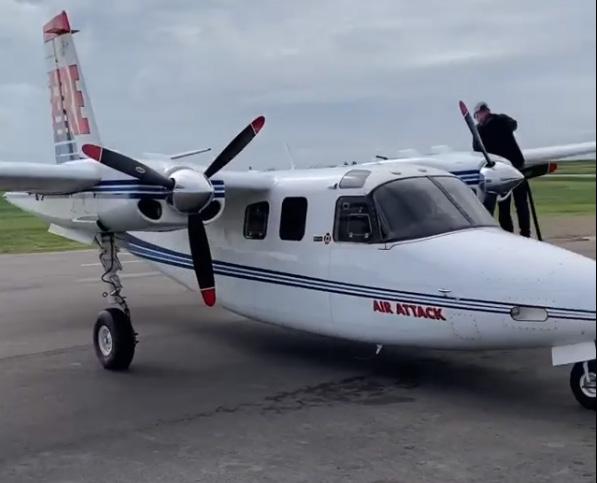


aerialfiremag.com | AF 45 DEPLOYABLE CAMERA LIFT Fire Attack Gimbal Retraction System STC Now Flying Turbine Commander 690A/B DA62-MPP C206H (STC pending) Can be adapted to additional platforms 949-419-1516 bearsintheair@airbear.aero RETRACTION HATCH HeliQwest operates several K-Max helicopters that perform both long-line work and aerial firefighting operations.
HeliQwest operates several K-Max Helicopters for heavy lift and firefighting operations.

Right: Maintainers work hard throughout the year to keep aircraft operational between Canadian and U.S. locations.
This process has attracted the attention of many logging companies who see value in being able to process logs on short notice to maximize fluctuating market demands. After many revisions over the years, his invention is now being utilized in logging operations in British Columbia.
With the assistance of his father being a dual US/ Canadian citizen, Chalifoux soon created a website for
HeliQwest that began looking for work in the lower 48. The first contract he won stateside was to provide logging transport with a Bell 205 in Grand Junction, Colorado, in 1996, bringing his custom grappling apparatus, which would demonstrate to customers how effective it was. That contract then led to power company contracts and rapid expansion over the next few years for the company.
AF 46 | aerialfiremag.com
HeliQwest, over the years, had bases in Montrose, Colorado, Boeing Field in Washington State, Provo, Utah, and Las Vegas, Nevada, before settling in Denver, Colorado.

As luck would have it, the company that HeliQwest provided seismic work was bought out by an American company. That company retained HeliQwest to continue its work in the United States. It was flipping the work split between the Canadian “HeliQwest Aviation Inc.” and the US company “HeliQwest International Inc.”, which at this stage was now operating ten aircraft stateside and three in Canada, moving pilots who were also dual citizens between the two countries as work requirements demanded.
Chalifoux credits the company’s growth to continually providing the best service it can to customers, having never needed to advertise what they do and relying on word of mouth, which has served the company well during its over three decades of operation in both countries.
Firefighting
“We have never stopped changing since the day we started the company,” said Chalifoux, who stated that firefighting operations first started for the company in Canada as their seismic work would shut down as soon as there was a high fire risk. Lucky for HeliQwest, the helicopters conducting
seismic work would then be hired to fight the fires, prompting Chalifoux to always to keep a bucket loaded on site when working seismic. This would allow the aircraft to switch missions into a call-when-needed helicopter for firefighting missions, keeping the aircraft working.
Initially, all of HeliQwest’s aircraft were on a call-whenneeded contract. Over the years, Chalifoux has moved to a mix of call-when-needed and exclusive use contracts for his fleet of 205s, K-Max’s, and recently the three UH-60A+ Blackhawks the company has acquired. The company also has a mix of bucket machines and is moving into more tanked aircraft, as required. ➤

aerialfiremag.com | AF 47
Mefford Field TLR • Tulare, CA Toll-Free 877-686-7401 TheValleyAirCrafts.com AIR TRACTOR® SATISFACTION Exceptional Service, Every Time
HeliQwest currently operates three UH-60A helicopters with plans to operate a total of four in the future.
A bucket aircraft is typically on a 150-day contract. In contrast, according to Chalifoux, a tanked aircraft will get an additional 30 - 50 days on a California or Texas contract.

Fleet & Staffing
Chalifoux has continued to grow HeliQwest over the years, building staffing up to 120 employees between the US and Canada. The company now operates 21 helicopters that are a mix of Bell 205’s, Airbus AS-350/H-125s, K-Max, and Sikorsky UH-60A Blackhawks that run a variety of Bambi Buckets, Helitak and Isolair tanks.
Regarding long-term plans for aircraft, Chalifoux will continue to streamline their operation, although staying in the type 1 market, and will be selling off some aircraft in the
future with a US fleet of four UH-60As. Four K-Max’s, four Bell 205’s, and 3 to 4, B3E- A-Stars.
To finish out the fleet of aircraft, the HeliQwest fleet is serviced in the field by fuel trucks and work trailers as well as two specialty built tractor-trailers (Heli-Haulers) that can be sent into the field at a moment’s notice to provide ground transport of an aircraft to a location, keeping ferry costs down and hours put on an aircraft to a minimum. These tractor-trailers have delivered aircraft around the United States, Canada, and even to contracts in Mexico.
A unique part of operations that sets HeliQwest apart from other firefighting-only functions is using a unique piece of equipment on the logging side. ➤









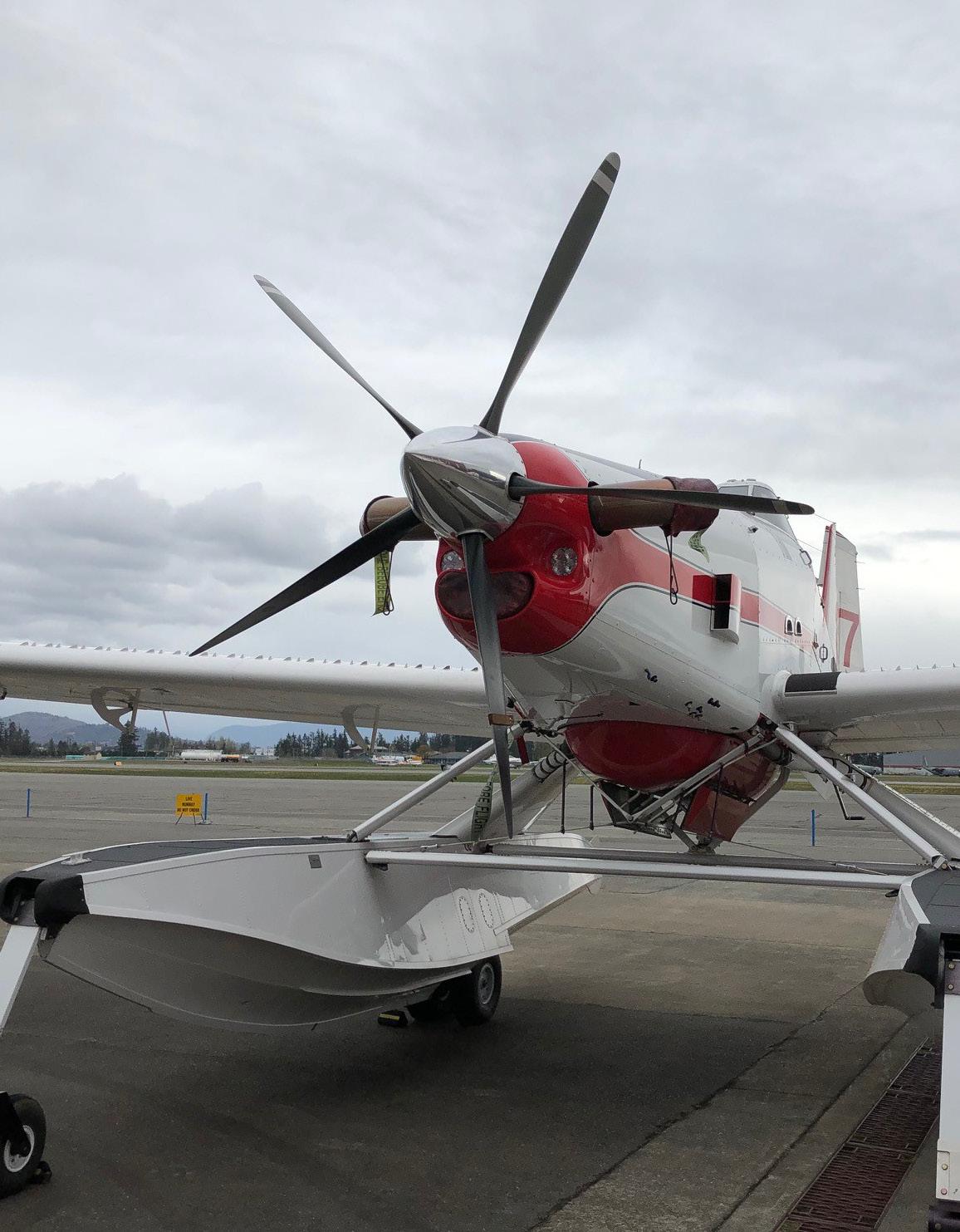
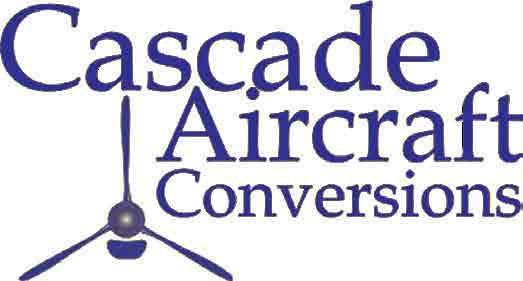

sales@desser.com www.desser.com 800.247.8473 New Tires, Retreads, Hoses, Brakes & Battery Programs. AT802, S2s to 747s. And Everything In Between. Aerial Firefighting Operators Choice. MISSION WORK IS TOUGH. When you’re flying a firefighting mission, you need a helmet that DIALS in the COMFORT. The ASPIDA-D is the only DOI/USFS certified helmet to pass testing in every size. For more info about Paraclete helmets visit ParacleteLifeSupport.com or contact 931.274.7947 / Sales@ParacleteLifeSupport.com SAFE ASSOCIATION AT-802 FIREBOSS Cascade Pressure Cowl Delivers! u Increase in Clean Air Volume to PT6 engine u Decrease up to 32⁰ ITT Temps u Decrease up to 1.5% NG u Easy Access to Service Air Filter System ( Filter swap - 20 min) Fuel Nozzles Chip Detectors Pilot Report: “Before the Cascade Pressure Cowl, this FIREBOSS was always at the back of the pack. Cascade Pressure Cowl installed, it’s always at the front with our best performing FIREBOSS! Performance is everything! ” ProtectingthePT6ATurbineEnginefor21Years! www.cascadeaircraftconversions.com 903 Grinnell Rd. Garfield, WA 99130 | PH. 509.635.1212
A 40 man floating camp/barge is used on the British Columbia coast to support winter/spring logging operations.
It is supported with a tug and two additional heli barges that can support Heavy and medium lift aircraft such as a kmax and Sky crane. This camp could also be used for firefighting operations if the need arises, but is primarily used on the logging side that can land and refuel aircraft, provide maintenance, and accommodate an entire crew in remote locations on BC’s mid to north coast.
Adding Hawks
Over the last few years, HeliQwest has added three UH60A+ Black Hawks to their firefighting fleet, with plans for a fouth in the long term. Each has been fitted with the relatively new, Australian-manufactured FT4500 expandable Black Hawk tank from Helitak. Unlike other external tanks made for that body style of aircraft, they do not require fitting a modified high skid gear as seen on the S-70i Firehawk and similar models. The aircraft can be converted back to a bucket ship in 30 minutes by simply detaching the tank. This is very effective when working in areas where water is scarce as the power fill bucket can get water from nearby creeks and rivers where tall trees are not a factor for a bucket on a Longline.
Chalifoux explains that the company has always been a heavy lift company, so moving into the hawk was a natural progression for HeliQwest.” The heavy helicopter thing is a significant component of what we do, so we said, “let’s try one of these Blackhawks out!”
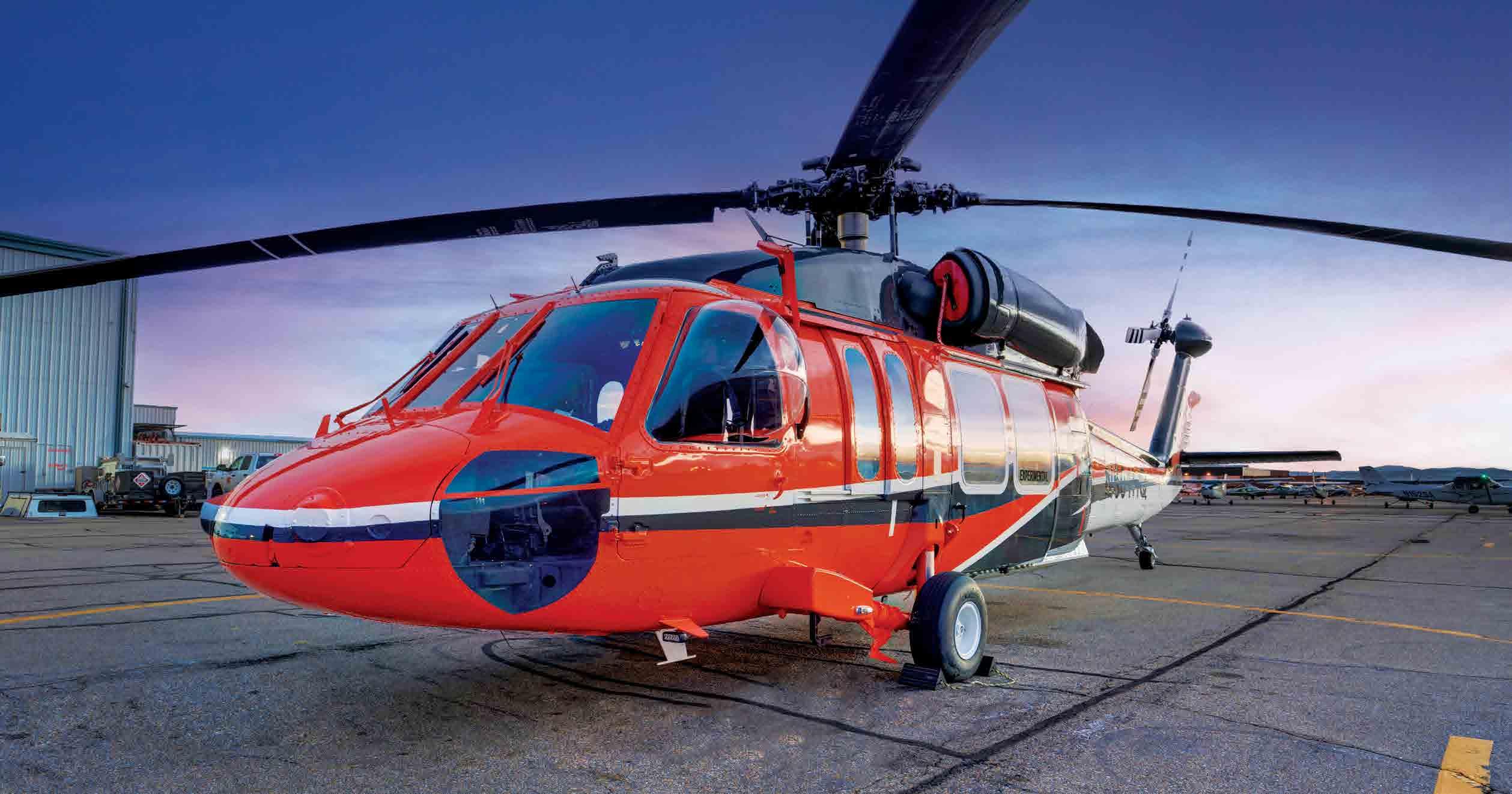
This came to fruition as Bob and his wife sat in Palm Springs and monitored several aircraft on a bid site over the Christmas season. They were successful in the bid on two of the aircraft they currently operate. Alabama-based Arista Aviation did the completions on the aircraft before they were put to work. One of the hawks was successful in securing a 5 year contract with Colorado State Division Of Fire Prevention and Control as well as a 5 year contract in Australia for NAFC.
Factoring in the high-altitude environment of Colorado and many other areas of their aircraft work, Chalifoux also requested the completion be as light as possible. Thus allowing for a light weight aircraft in a hot and high environment. The hawks now split their time between working in the United States and Australia between each fire season, working in partnership with Wollongong, Australiabased Touchdown Helicopters during the Australian fire season during the US winter.
Training
While training varies greatly, as do requirements for each role in each country the company operates in, Chalifoux is happy that the company now operates hawks. Chalifoux stated they can now find former military pilots with enough hours on type, so the training centers significantly on the firefighting piece. Military aviators come with thousands of hours on type and need to be taught the intricacies of fighting fire safely, which they do by pairing former military aviators new to the company with seasoned fire pilots to provide their training. ➤
AF 50 | aerialfiremag.com
HeliQwest H-60’s have been modified to be as light as possible for maximum range and performance. Photo courtesy HeliQwest.

aerialfiremag.com | AF 51 New PHOS-CHEK® LCE20-Fx offers superior performance with a lower environmental footprint Why PHOS-CHEK LCE20-Fx? © 2022 PERIMETER SOLUTIONS LP. ALL RIGHTS RESERVED. PERIMETER SOLUTIONS IS A TRADEMARK OF PERIMETER SOLUTIONS LP OR ITS AFFILIATES. perimeter-solutions.com ASIA PACIFIC Tel: +61 2 9673 5300 UNITED STATES Tel: +1 909 983 0772 EMEA Tel: +34 985 24 29 45 PHOS-CHEK® AUXQUIMIA® SOLBERG® FIRE-TROL® Can Fire Retardants Get Better? With Us They Can. Working with global fire safety agencies and alongside frontline firefighters we’re always looking to make our aerial fire retardants better. More effective. Safer. Easier deployment. Higher visibility. Hassle-free mixing and storage. In the critical area of environmental performance, our PHOS-CHEK LCE20-Fx fire retardant represents a next generation technology –featuring lower aquatic toxicity, low impact on vegetation and high efficiency in use. Beyond taking care of our natural environment, that makes PHOS-CHEK LCE20-Fx safer to use, easier to handle and reduces disposal costs. Let us know how we can help you with better products and services. We’re listening. • USDA Forest Service certified • 100% premium-grade phosphate product • Superior aerial visibility • Low environmental footprint • Improved aquatic toxicity • Improved product stability • Easier handling • Reduced maintenance costs • Enhanced product safety Trusted. Solutions That Save.
HeliQwest
Facilities
HeliQwest operates a facility near Edmonton, Alberta and Nanaimo, BC. Canada in addition to the US company headquarters, located at Rocky Mountain Metro Airport in Broomfield, Colorado, with a sub base in San Diego, CA. Denver houses the company’s part 145 repair facility and state-of-the-art paint booth where it can paint its aircraft.
HeliQwest obtained a type certificate that ecompases all of the upgrades to make the HQ-60+ a high altitude performer for Fire and heavy lift. In the long term, HeliQwest plans to make available the type certificate to other new interested Hawk operators which would include completions.


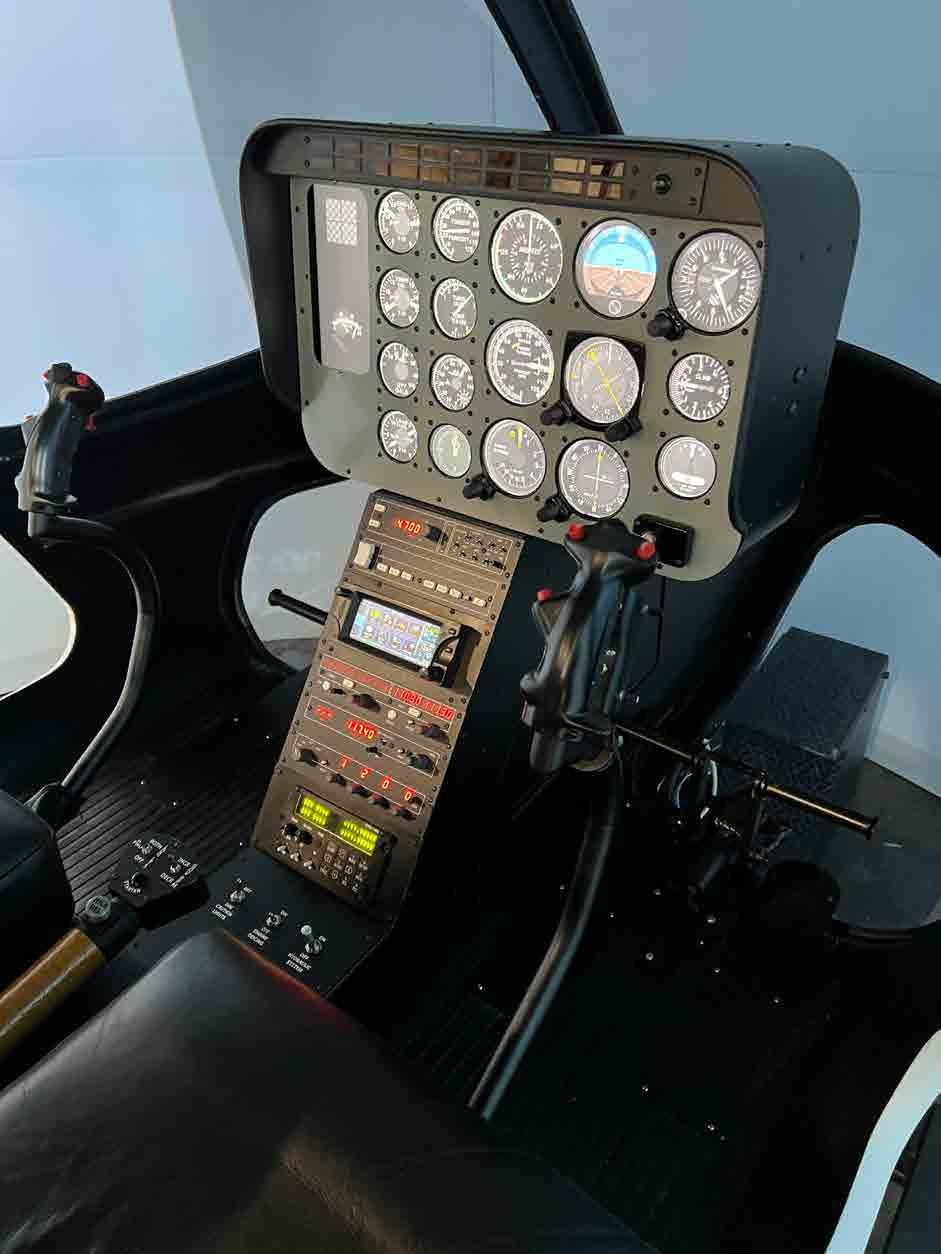


Difficulties of COVID
One of the more difficult things over the years for Chalifoux has been to keep staffing levels, which during COVID proved complex thanks to border closures for staff working in both countries and pilots wanting to move to the next stage of their career. Losing staff to competitors was another consideration after significant investments in training for unique aircraft like the K-Max, which requires a $50,000 investment per pilot for each training course, had pushed Chalifoux toward streamlining the aircraft the company operates. ➤
WE OFFER DUAL INSTRUCTION TIME BUILDING PACKAGES IN A DUAL CONTROLLED AT-802. SAFETY THROUGH SIMUL ATION Member CALL FOR DETAILS 866-335-1224 info@turbine-training.com www.turbine-training.com Excited to announce our new Bell 206 and Fire Boss Simulator Training Other training o ered: Wheeled Tanker Simulator Training Air Tractor Simulator Training Customized Courses ….and more!
UH-60’s can operate with a belly tank or a Bambi Bucket depending on the mission.
(503)

(503)



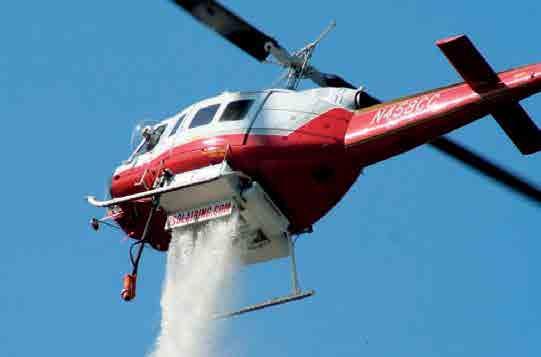








For over 30 years, ISOLAIR has been manufacturing industry leading helicopter systems for the firefighting, forestry and aerial application industries. With a broad line of certified and custom helicopter equipment, ISOLAIR has the system to fit your company’s needs From agricultural spray systems and bucket spreaders to firefighting systems, forestry grapples and torches, ISOLAIR can and will do it all! With competitive pricing, quality assurance, easy to install products, and an ongoing commitment to customer service, we welcome you to contact us. Our friendly and knowledgeable staff is ready to answer your questions and help you find the ISOLAIR system that will best meet your operational requirements. ISOLAIR HELICOPTER SYSTEMS 2410 NW BURNSIDE CT. GRESHAM, OR 97030 U.S.A. PHONE: +1
492 2105 FAX: +1
492 2756 EMA www.isolairinc.com SCAN THIS CODE WITH YOUR SMARTPHONE FOR MORE INFO *MENTION THIS AD AND SAVE 10% ON YOUR NEXT PURCHASE. *FOR A LIMITED TIME ONLY For over 30 years, ISOLAIR has been manufacturingindustry leadinghelicopter systems for the firefighting, forestry and aerial application industries. With a broad line of certified and custom helicopter equipment, ISOLAIR has the system to fit your company’s needs.Fromagricultural spray systems and bucket spreaders to firefighting systems, forestry grapples and torches, ISOLAIR can and will do it all! With competitive pricing, qualityassurance, easy to install products, and an ongoing commitment to customer service, we welcome you to contact us. Ourfriendly andknowledgeablestaff is ready to answer your questionsand help youfind the ISOLAIR system that will best meet youroperational requirements. ISOLAIR HELICOPTER SYSTEMS 27600 SE HIGHWAY 212 BORING, OR 97009 U.S.A. PHONE: +1 (503) 492-2105 FAX: +1 (503) 492-2756 Email: isolairinc@gmail.com www.isolairinc.com SCAN THIS CODE WITH YOUR SMARTPHONE FOR MORE INFO *MENTION THIS AD ANDSAVE 10% ON YOUR NEXT PURCHASE. *FOR A LIMITEDTIME ONLY www.spidertracks.com Simple flight data today, for a safer tomorrow. Meet contractual requirements, effectively suppress fires, and get your team home safely with a globally trusted real-time flight tracking solution.
Bob and Lisa Chalifoux (left in black polo’s) employ over 120 staff between the U.S. and Canadian operations of the company.
Family Traditions
Bob and Lisa run the family business. Two of the three sons have been involved in the company business. One is a licensed aircraft mechanic who has now transitioned to a flying role. The best pilots are now mentoring him in the organization that has directly transferred into the left and right seat of the Black Hawk. Lisa also handles the day-today business operations management of the company in the front office, and Bob works at the company headquarters.
The company is supported by “TEAM HQ” which is a combination of 10 managers and 100 plus employees that live and breathe the HQ Orange.
Conclusion
While Bob Chalifoux looks toward making the company more streamlined in the future, his creative mind continues to invent new ways to make the business continue to be successful way into the future. The company will continue to provide valuable services to the helicopter market in aerial firefighting through its innovations in the type 1 market, ensuring no end to the continued successes of HeliQwest.
The HeliQwest UH-60 now has its own type certificate and can be replicated by HeliQwest for customers at their state of the art facility in Colorado.

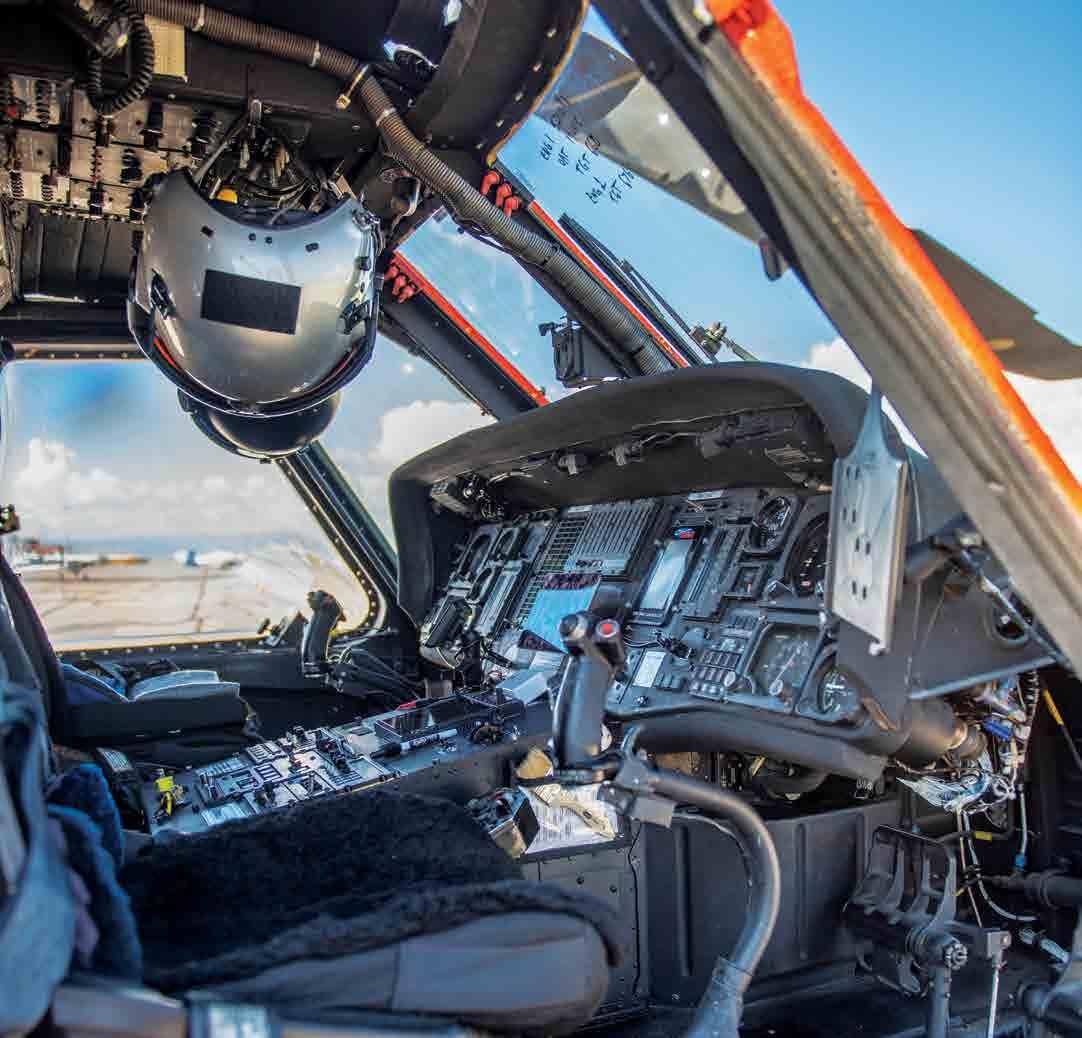

AF 54 | aerialfiremag.com

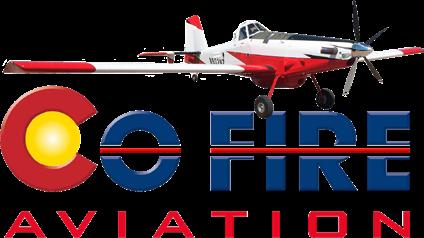


aerialfiremag.com | AF 55 When you need a S.E.A.T., ask for a CO Fire SUPER S.E.A.T. 970-867-8414 www.cofireaviation.com More Performance, More Productivity Ask about our night capabilities using NVG’s. • 1,600 HP Wipaire STC PWC PT6A-67F • Capable of loading to 16,000 lbs Max Gross Weight across all alt and Temp ranges • 380 gallon fuel tanks - 4.5+ hours over the fire • Type 3 Hydromax Gate • 20-30% more productive than standard S.E.A.T. • Synthetic Vision Glass Panel • Many other advanced safety features AerialFire serves the entire aerial firefighting industry reaching operators, pilots and tanker bases worldwide, including North America, Europe, Australia, Asia, Africa and South America. AerialFire, printed bi-monthly, is the only print publication that exclusively services the aerial firefighting sector. You Can’t Skip This Ad
Mechanized Birds: Wildland Firefighting With Drone Intelligence
by Andrew Avitt
USFS Pacific Southwest Region
The robotic birds of the sky, known colloquially as drones, were a menace to the wildland firefighting community. The mere appearance of a recreational drone in the skies near a wildfire called for the grounding of all firefighting aircraft, giving birth to catchy sayings like “If you fly, we can’t,” and “It’s not worth the view.”
While these sayings are still true, drones – also called UAS or unmanned aerial systems – are playing an increasingly important role in fighting wildfires.
No, drones can’t drop thousands of gallons of water or fire retardant like a supertanker. They also cannot deliver thousands of pounds of supplies like the K-MAX helicopter or evacuate injured firefighters like UH-60 Black Hawk helicopters. The drones can, however, support operations with aerial ignition and gather intelligence then relay that information to firefighters on the lines within minutes.
The greatest benefit drones provide is they can take to the sky when human-powered aircraft are grounded for pilot safety.
The fixed wing drone has the capability of flying around the entire perimeter updating maps and providing real time intelligence to firefighters. (USDA Forest Service photo by Andrew Avitt)
Take, for example the FVR-90, a fixed-wing drone with a 14-foot wingspan capable of traveling at speeds up to 80 knots, or 46 mph, with a flight time of 8 hours. They are sent airborne just at dusk when other human-piloted flights are grounded. The sky is theirs, and the overhead view they have of the fire is detailed and in real time. ➤
“The way we use UAS now is very much a supplement,” said Justin Baxter, the Forest Service National UAS Operations Specialist. “There are certain times that it’s just not safe for us to utilize manned helicopters or fixed-wing aircraft, like nighttime operations or in thick smoke or high winds. But during those times there are still firefighters out there trying to complete the day’s objectives and put the fire out.”
A picture of two people looking at a digitized, large wildland firefighting map that has been projected on a screen.

The drones that Baxter and his team fly are equipped with cameras that are not your normal cameras. They come equipped with multiple types of sensors, including infrared, that allow the team to see through smoke and, at night, see heat signatures, or thermal-based imaging. This allows the team to identify areas where fire is still active and new areas where flames have advanced, such as spot fires.
There are a few different types of drone used by firefighters. Rotor wing drones resemble more of what recreational drone pilots might fly, ranging from a small one- square foot to a medium 6-square feet. These types of drones operate nearer to the front lines supporting individual divisions of firefighters to give them a closer look and inform their strategies. Rotor wings can also be used for aerial ignition which burns up existing fuels ahead of the fire to starve it and creates a wider fuel break. (USDA Forest Service photo courtesy of Mike Yearwood)
Spot fires occur when embers from the main fire are thrown into the air and pushed by wind until they fall to the ground, starting a new fire. They are notoriously hard to identify because they are small at first and visibility is diminished by smoke. They also may occur in hardto-reach places difficult for firefighters to patrol, like on steep slopes or down in drainages.
“Drones are changing that labor-intensive process to identify these spot fires, especially when an operational area can span hundreds of thousands of acres,” Baxter said. With drones, fire managers and incident
AF 56 | aerialfiremag.com
An image showing a digitized wildland fire map and the fire’s boundary and the other image shows hot spots within the fire’s boundary.
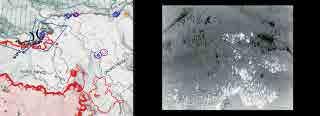
management teams can scan large areas quickly and easily identify spot fires up to about a mile from the main fire. That information is relayed and enables firefighters to get in and suppress those new starts before they grow.
“To give you an idea, this drone can pick up a 2-inch-by2-inch spot fire from a half-mile away,” said Baxter as he gestured to the imposing drone just to his left minutes before takeoff to fly around the perimeter of the Six Rivers Lightning Complex Fire near Willow Creek, California.
Baxter said that much has changed since 2015 when the agency began the UAS program. With each passing year, incident management teams have increasingly incorporated the capability into their strategies.
Tyler Kock, Daniel Rodriguez, and Cliff Savage a contracted UAS crew with Precision Integrated Programs / Overwatch Aero on the Lighting Complex Fire. These UAS are used to provide real-time situational awareness to ground crews while also providing timely perimeter updates to the command staff. (USDA Forest Service photo by Andrew Avitt)
The communication between the UAS crew and firefighters on the ground flows in both directions. The drone may be flying over and see heat in an area and radio it into the hotshot crew to check out. Conversely, the hotshot crew can radio in to the UAS crew and ask for assistance in exploring an area that they suspect might be active, and then view a feed from the drone of the area in question.
John Crotty served as the air operations branch director with California Interagency Incident Management Team 15 that responded to the Lightning Complex Fire on the Six Rivers National Forest.
Aerial intelligence isn’t new in wildland firefighting, said Crotty referring to the recently retired Cobra helicopter
and its capabilities. But the implications of unmanned flight— that opens up new possibilities.
“With the Cobra aircraft, we needed a pilot and an interpreter up there to run the camera and talk to the folks on the ground. So, we expose two individuals plus a flight [to risk],” said Crotty, “But what we really needed was the visibility to fly.”
Thick smoke on the fires like the Lightning Complex can ground manned aircraft. That’s where drones come into play and the images it captures can inform firefighters working across a large area.
“The other day I heard from one of the hotshot crews out there. They were in heavy smoke conditions, at night. With the low visibility they couldn’t see if they had a spot fire across the line,” Crotty said. “This tool being up in the air, looking down at that exact area, the UAS crew was able to pinpoint the spot and provide precise coordinates to the firefighters who were able to check it out and put it out. That kind of information we would never have without these unmanned aircraft and that capability.”
Firefighting drones carry cameras with multiple types of sensors that can see heat from fires on the landscape, at night and through smoke. In the left image a box shows the area of land that is visible in the right image. These images are then used to update maps.
The unmanned aerial systems crew couldn’t recall a time when drones were used so much during a wildfire incident, which has now been underway for more than a month, and that flying these aircraft is much more cost efficient.
“Drones are the future of aviation for not only fire but for aviation in general. It’s a win-win for the agencies to operate under an umbrella of this type of aircraft that can provide precise and timely info to firefighters and incident management teams, and most importantly, we can do it safely.”

aerialfiremag.com | AF 57
Brazil Opens Latin America's First Aerial Firefighting Research Station
by Lucas Zanoni
The project has the participation of four ag aviation companies and the support of several research and teaching institutions. In their first work, six different agricultural aircraft were evaluated.
The Project
Last week, the first aerial firefighting research station in Latin America was inaugurated. Established in São José do Rio Preto (state of São Paulo, Brazil), at the operational headquarters of Imagem Aviação Agrícola, the project was structured together with three other aerial application companies (Pachu, Produtiva and Vale do Paranapanema), in addition to the manufacturer Zanoni Equipamentos and the consulting firms SABRi - Sabedoria Agrícola and RTC - Gestão of Risks and Training.

The open-air laboratory was implemented to evaluate the performance of agricultural aircraft in firefighting, measuring the wetting area and the deposition of dumpings with different technologies. The data collected are of great importance for the activity, because from them, it will be
possible to analyze the effectiveness of each ag aircraft for different types of fire and determine best practices for the industry.
In the first research protocol carried out to date in Brazil, six aircraft were evaluated: Ipanema 202, Air Tractors 402, 502, 602 and 802 and Thrush 510, all equipped with Zanoni firegates. In addition to helping contractors (such as sugarmills, farmers and governments) to better understand aerial firefighting technologies, the information collected will be an "international case" for discussion on the use of agricultural aircraft in this activity, since it is a pioneering project around the world. The research mobilized more than 50 professionals and was supported by SINDAG (Brazilian National Agricultural Aviation Association) and the agronomy faculty of the Centro Universitário de Rio Preto (UNIRP) university.
AF 58 | aerialfiremag.com
The Host
Imagem Aviação Agrícola is an aerial application company located in the sugar and alcohol hub of Brazil. Incorporated in 2000, in the city of São José do Rio Preto, the business is the result of a partnership between Rodrigo Fernandes, agricultural pilot since 1997, and Jorge Humberto Toledo, agronomist and vice president of SINDAG since 2019. With two operational bases (in the state of São Paulo), almost all of its spraying work is in sugarcane crops. The company is one of the main operators in Brazil, with six Embraer Ipanemas and seven Air Tractors (one AT402, five AT502 and one AT802).
Imagem started firefighting operations in 2014 working for the state of São Paulo, being one of those responsible for helping the local government's aerial firefighting program. In addition to providing services to the civil defense (fire
department) and to the federal government in protected areas in the last years, the company also provides services to the sugarcane industry, running some “Call When Needed” contract with large sugar mills at a fixed rate per hour.
The two friends, who have been at the forefront of aerial firefighting in Brazil for years, have now given a "scientific kick", building the first research station for the use of ag aircraft in this activity and contributing to the industry globally. "This work only demonstrates the high degree of maturity that the Brazilian ag aviation industry has reached in fighting fires. We have advanced with a lot of research and development to reach a standard of excellence that meets the needs of Brazil. It is necessary to offer great professionalism in this activity, within our reality and that adapts to our country", highlighted Toledo, one of the several creators of the project. ➤

aerialfiremag.com | AF 59
A Brazilian firefighting aircraft approaches a test field to evaluate a drop pattern.
The Reasons
There is an appropriate aerial firefighting technology for each type of fire and each vegetation requires a different amount of water to control the spots. Aircraft are an auxiliary tool in firefighting, being fundamental for cooling areas where ground brigades are working or for reaching initial fire outbreaks in places of difficult access. The efficiency of aerial firefighting (whether it is carried out by multi-engine, singleengine or rotary wing aircraft) is measured by the density/ coverage of liquid over the target. In Other words, how much fire retardant (whether water or chemical) reaches the ground when it is released by air. The main indicator for its evaluation is in liters per square meter (L/m²) or gallon per square foot (gal/ft²) The scientific literature determines the ideal deposition of retardant for an effective control according to each type of vegetation. According to the National Fire Danger Rating System (NFDRS), the required coverage is as follows:
• Fields and grasses: above 0.4 L/m² (0,01 gal/ft²)
• Savannah and early pine plantations: above 0.8 L/m² (0,02 gal/ft²)
• High density shrub vegetation: above 1.2 L/m² (0,03 gal/ft²)
• Closed forests: above 1.6 L/m² (0,04 gal/ft²)
From these parameters, it is possible to assess whether an aerial firefighting tool is efficient or not for a given type of fire. A given aircraft dump will offer different depositions at different locations of the total wetting area. Thus, it is not enough to find only the maximum coverage offered at a specific point (ie, it is inaccurate to say that an aerial firefighting technology offers a certain deposition in L/m² or gal/ft²). It is also necessary to assess which proportion of the wetting area falls within the parameters mentioned above.
That said, the research station was established for two purposes: to foster the professionalization of the industry (demonstrating the importance of proper equipment and helping to establish a "certification protocol") and present/compare the Brazilian technologies with other models around the world.
The First Results
After a week of work evaluating the most popular agricultural aircraft in the Brazilian market, the research found the two main indicators of aerial firefighting technologies (wetting area and deposition) for each of them eqquiped with Zanoni gates:
DEPOSITION ABOVE 1.6L/M² (0,04 GAL/FT²)
1076
908m²
576m²
9773
6200
1032m²
11108
(60%) 1320m²
(59%) 1268m²
14208
13648
(38%)
672m²
7233
(39%) 936m²
10075
844m² / 9084
AF 60 | aerialfiremag.com More data can be found with the research team. IPANEMA AT402 AT502 THRUSH 510 AT602 AT802 POINT OF MAXIMUM DEPOSITION 6 l/m² 0,15 gal/ft² 5 l/m² 0,12 gal/ft² 4,7 l/m² 0,115 gal/ft² 9 l/m² 0,22 gal/ft² 9 l/m² 0,22 gal/ft² 9,5 l/m² 0,23 gal/ft² WETTING AREA 672m² / 7233 ft² 1752m² / 18858 ft² 2608m² / 28072 ft² 1712m² / 18427 ft² 2244m² / 24154 ft² 3339m² / 35940 ft² WETTING AREA LENGTH 70m / 229 ft 140m / 458 ft 208m / 682 ft 114m / 374 ft 216m / 708 ft 244m / 800 ft DEPOSITION ABOVE 0.4L/M² (0,01 GAL/FT²) 288m² / 3100 ft² (43%) 1348m² / 14509 ft² (77%) 1960m² / 21097 ft² (75%) 1520m² / 16361 ft² (89%) 1948m² / 20968 ft² (87%) 2412m² / 25962 ft² (72%) DEPOSITION ABOVE 0.8L/M² (0,02 GAL/FT²) 200m² / 2152 ft² (30%) 1120m² / 12055 ft² (64%) 1336m² / 14380 ft² (51%) 1300m² / 13993 ft² (76%) 1640m² / 17652 ft² (73%) 1700m² / 18298 ft² (51%) DEPOSITION ABOVE 1.2L/M² (0,03 GAL/FT²) 172m² / 1851 ft² (26%) 852m² / 9170 ft² (49%)
/
ft² (34%)
/
ft²
/
ft²
/
ft²
100m² /
ft² (15%) 540m² / 5812ft² (31%)
/
ft² (22%)
/
ft²
/
ft² (42%)
ft² (25%)
The First Conclusions
After the first stage of the project, some interesting conclusions were found to contribute to Brazilian agricultural aviation and the use of SEATs around the world, highlighting: (1) the total incompatility of the standard agricultural aircraft system for this work; (2) the possibility of using smaller aircraft for low density vegetation fires (3) the potential of great results with transversal/hybrid fire gates.

In several countries around the world, it is still common to see the attempt to carry out aerial firefighting with common gate boxes. The fact of discharging water from the aircraft leads to the belief that this will contribute to control of fire. But if it does not reach the required volume of deposition, its use can mean not only a waste of time and resources (since it will not generate significant results in controlling the
fires), but also create the opposite effects. If the amount of water or retardant dumped by the aircraft is not enough, the mass of the liquid can only “push” more oxygen towards the fire source and increase its strength even more. One of the results found by the research was that common gate boxes of the main agricultural aircraft models do not offer efficiency for this activity. The volume of water found in the collectors after each operation was negligible, and it was impossible to even measure it. Thus, it is important that the aerial application industry is aware of the need for appropriate equipment to perform this type of services, at the risk of denigrating the image of aerial firefighting and decrease the demand for this type of technology.
A second interesting finding from the research was related to the use of small agricultural aircraft. ➤

aerialfiremag.com | AF 61
Drop patterns are measured by how many cups are wet through the drop location.
For a few years, the use of piston aircraft (such as Embraer Ipanema and Cessna 188) for firefighting in Brazil has been common among farmers. Although there was always a theoretical discussion that small-capacity aircraft would

not be efficient for this service, during all drought seasons they had been performing this task. The data collected by the project indicated that, with the proper equipment, a 200-gallon aircraft can indeed be viable in controlling fires

AF 62 | aerialfiremag.com
Various aircraft including Air Tractors, Thrush Aircraft and Embraer Ipanema aircraft were evaluated during recent testing.
in pastures and crops. From these new technologies, it is now possible to use a fleet of more than 1500 Brazilian small ag aircraft to protect farms around the country.


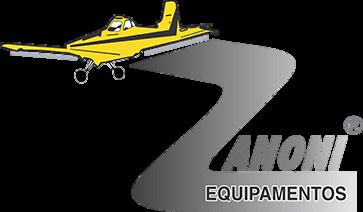





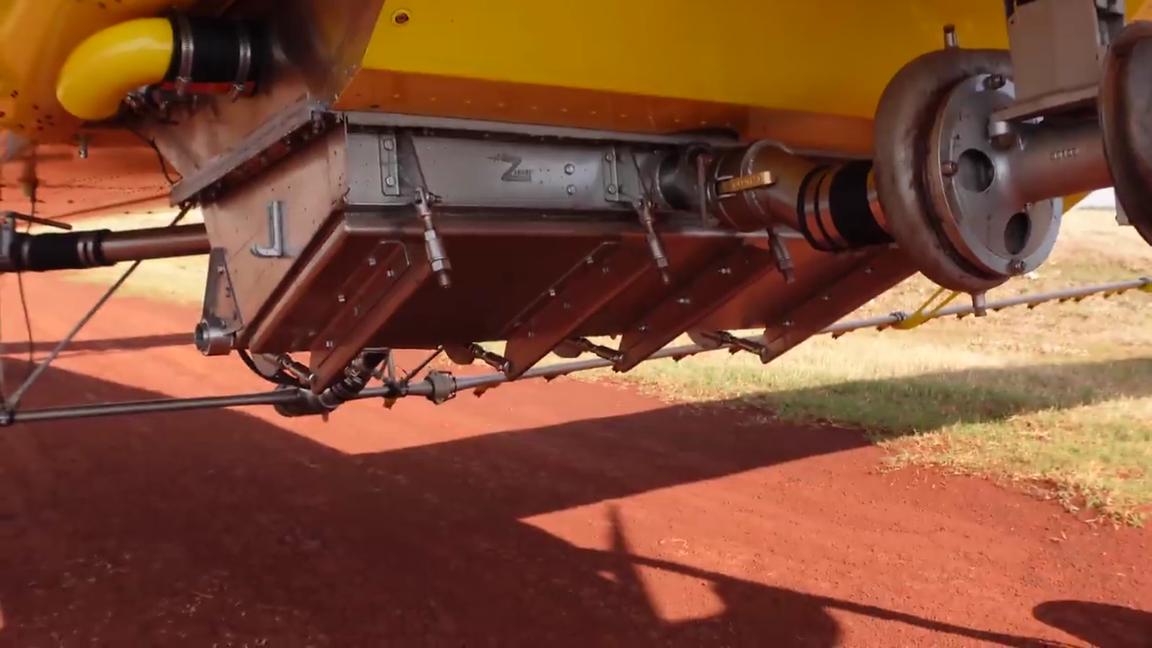
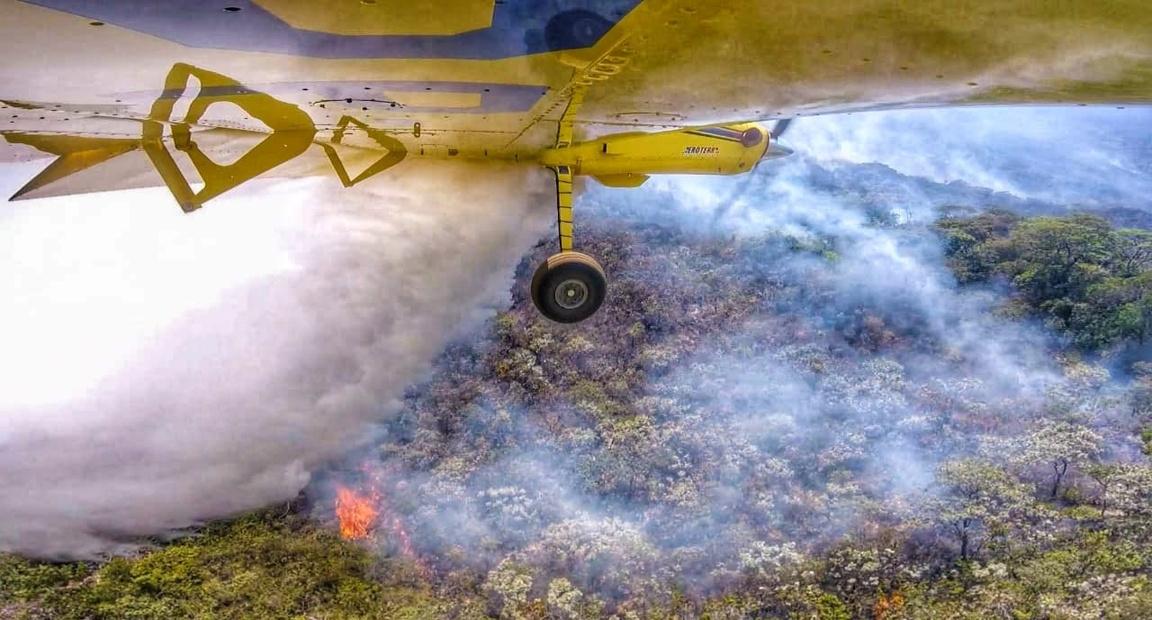

Finally, the research indicated that transversal opening gates (single door) can offer excellent results and are suitable for fighting fires in high density vegetation, such as savannas, tropical forests and pine plantations.




Countries with weaker public sectors and with smaller state budget have stood out for developing an aerial firefighting model that is different from countries in the northern hemisphere (where contracts are usually governamental). In their reality, this activity has been driven by the private sector, where several farmers and agribusiness companies have contracted the aerial application services to protect crops and private forests against fires. The bigger single-door gates fit perfectly for this demand: in addition to offering an excellent dumping for firefighting in high density vegetation (with scientific proof for this work), they are compatible with the agricultural system and works for liquid application and solid spreading. The routine of ag pilots in these regions, many having up to three crop seasons, often involves spraying agrochemicals in the morning and fighting fires at the end of the day.
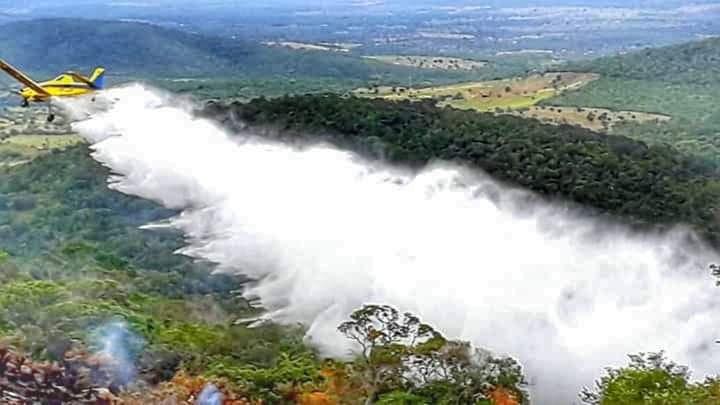
ZANONI FIRE GATES THE BEST OPTION FOR YOUR AG AIRCRAFT SALES@ZANONIEQUIPAMENTOS.COM.BR WWW ZANONIEQUIPAMENTOS COM BR +55 44 99864 6200 / +55 44 99864 4747
by Ted Delanghe
Many of us have experienced momentary lapses in awareness while driving long distances. We have difficulty remembering the past few miles driven, have drifted from the proper lane, hit rumble strips, or completely missed an exit. Or you get ‘the nods’ where your head droops forward for a second, and then you get a sudden body jerk back to full awareness. You turn up the radio or open windows to deal with these warning signs, but to no avail. Hopefully, you pull over and take a rest before something serious happens.
The situation is considerably more fraught with danger when ag flying. A few years ago, I was working a field over 40 miles from my home base, meaning there was a lot of transit time between loads. I remember the day was hot and muggy, and as I was flying an aircraft without an air condi tioner, cockpit comfort was an uncomfortable 5 points out of 10. We had started around 4:30 AM, and it was coming to high noon as I headed back to home base.
I clearly remember getting ‘the nods’ en route and desperately fighting the urge to have a quick nap when to my surprise, I had one of those body jerks that brought me back to full awareness just as the airport magically appeared five miles at 12 o’clock. Like the driving scenario, I couldn’t remember the
last few minutes and was completely surprised at how close I was to the airfield.
In another incident, I was flying a Brave when the old ‘nods’ again showed up, this time at spray height. Coming up to a small hill, the wheels firmly hit the ground, giving me a good bounce and scar ing the daylights out of me. Luckily, I was applying a pre-emergent treatment with little or no crop growth to snag the wheels. Once I arrived safe and sound back at home base, I headed for the crew trailer to get some desperately needed ‘zzz’s.
The Drowsy Flying Problem
The CDC (Centres for Disease Control and Pre vention) recognizes drowsy driving as a significant problem in the United States regarding automobile transportation, with the risk, danger, and often tragic results alarming. The CDC characterizes drowsy driving as the dangerous combination of driving and sleepiness or fatigue.
Drowsy flying ups the ante, where drowsiness decreases your ability to pay attention to the task at hand, slows your reaction time and affects your ability to make good decisions, all items that can make for a bad day at the office given the extremely low altitudes that are part and parcel of ag flying. ➤
AF 64 | aerialfiremag.com Alert Stay



Get your training from the source in our AT802 Fire Boss. We host seasonal training and on-location based on your needs. FIRE BOSS TRAINING aftl.aero | 651-209-7159 South St. Paul - Fleming Field (KSGS) 1700 Henry Avenue, South St. Paul, MN 55075
AUTHORS NOTE:
Several commercial products and apps, such as Fatigue Meter PRO and AlertMeter, also help establish a comprehensive risk management program focused on dealing with fatigue and alertness levels. The products give users the ability to monitor their own fatigue risk. Maybe one day, such prod ucts will be incor porated on a large scale within the ag aviation community.
If you exhibit any of these symptoms or feel that your flying abilities have been degraded, stop flying and find a quiet place to get some wellneeded shuteye. No amount of coffee will get you safely out of the drowsy flying arena.
Preventing Drowsy Flying
Prevent drowsy flying before getting in the cockpit. Get enough sleep – at least 7 hours a day - which is often very difficult given the hectic nature of ag flying with its irregular working hours and often constant demands to get the job done, regardless of weather, fatigue, or other factors. A critically important part is ensuring you have suitable sleeping arrangements to sleep undis turbed. And turn your cell phone off.
Microsleep
One step up (or down, depending on your view point) from drowsy flying is what the National Sleep Foundation terms microsleep, a condition that is quite common among long-distance driv
Warning Signs of Drowsy Flying
The National Sleep Foundation has laid out the following signs of drowsiness:
• Difficulty focusing, frequent blinking, or heavy eyelids
• Daydreaming; wandering/discon nected thoughts
• Trouble remembering the last few minutes
• Yawning repeatedly or rubbing your eyes
• Trouble keeping your head up
• Feeling restless and irritable
ers. It is when you fall asleep for several seconds. Fine when you’re watching your favorite TV pro gram, not so much when you’re treating a field at a boom height of ten feet.
Microsleep occurs so rapidly that the person involved may not even realize they have fallen asleep. Again, many can relate to a similar expe rience while driving, where you may appear to be awake, even with your eyes open, but the brain is sitting idle, not processing what is going on. I am confident that’s what happened to me when I skipped the wheels of the Brave off the ground I mentioned earlier.
The key risk factor here is that if you are sleep deprived, you are at higher risk for microsleep. It is essential to make sure that you are alert before you climb into the cockpit.
If you feel drowsy, do not fly. One study shows that moderate sleep deprivation produces

AF 66 | aerialfiremag.com
impairments equivalent to alcohol intoxication. In the study, after 17 to 19 hours without sleep, performance was equal to or worse than that of a blood alcohol concentration (BAC) level of 0.05 percent. After more extended periods without sleep, performance reached levels equivalent to a BAC of 0.1 percent.
A significant part of the problem is that, as a society, we do not recognize sleep deprivation and accompanying drowsiness in the same vein as alcohol consumption. When was the last time you stopped to think about how much sleep deprivation affects your ability to fly safely?
Countering the Effects of Drowsiness
So how do you deal with the dire conse quences of drowsiness and microsleep?
One of the major difficulties is that, for the most part, ag flying involves single pilot operations where you are self-mon itoring, which is not what you would call an objective look at things. The tired person is the last person to realize they are tired.

Because of its insidious nature, having several objective signposts alerting you to the gradual onset of drowsiness is an excellent way to start. As the AAU article from October 2020 discusses fatigue, fly outbound at precisely 300 feet AGL, and fly inbound at exactly 500 feet AGL. On every trip, complete the working logbook detailing times and areas treated. Alternate landings between wheel and three-point. Fly an exact airspeed on final.

Whenever you note you have either missed an item or noted a slide in per formance, it’s time to stop flying, take a break, and do whatever is required to get you back into safe and effective opera tions.
Stay alert. Stay safe. You, and everyone around you, will be glad you did.

Wildfire SOS
 by Dan Reese
by Dan Reese
Each year from 2021—2030, in the months from May—December, a national crisis will take place. A situation we can predict just as we predict daily weather patterns or identify and prepare for hurricanes, blizzards, floods, and other natural disasters. The U.S. wildfire predictions for the coming decade can be made today, and it is a given. The mid-twentieth-century notion of a short summer "wildfire season" is a thing of the past.
While winter snowfall, spring rains, autumn winds, and other factors will influence the ultimate degree of damage, massive damage running into the tens of
billions of dollars annually is a certainty. Thousands of wildfires will ignite in Oregon, Washington, Colorado, Utah, California, and other western states.
The initial reaction to annual wildfires is also predictable and visible every year. Elected and appointed state leaders, expert wildland firefighters, emergency management officials, and fire incident commanders in each state scramble to contain small fires that threaten to become massive "mega" or "giga" fires sure to destroy tens of thousands of acres of forested areas and threaten populated adjacent regions.
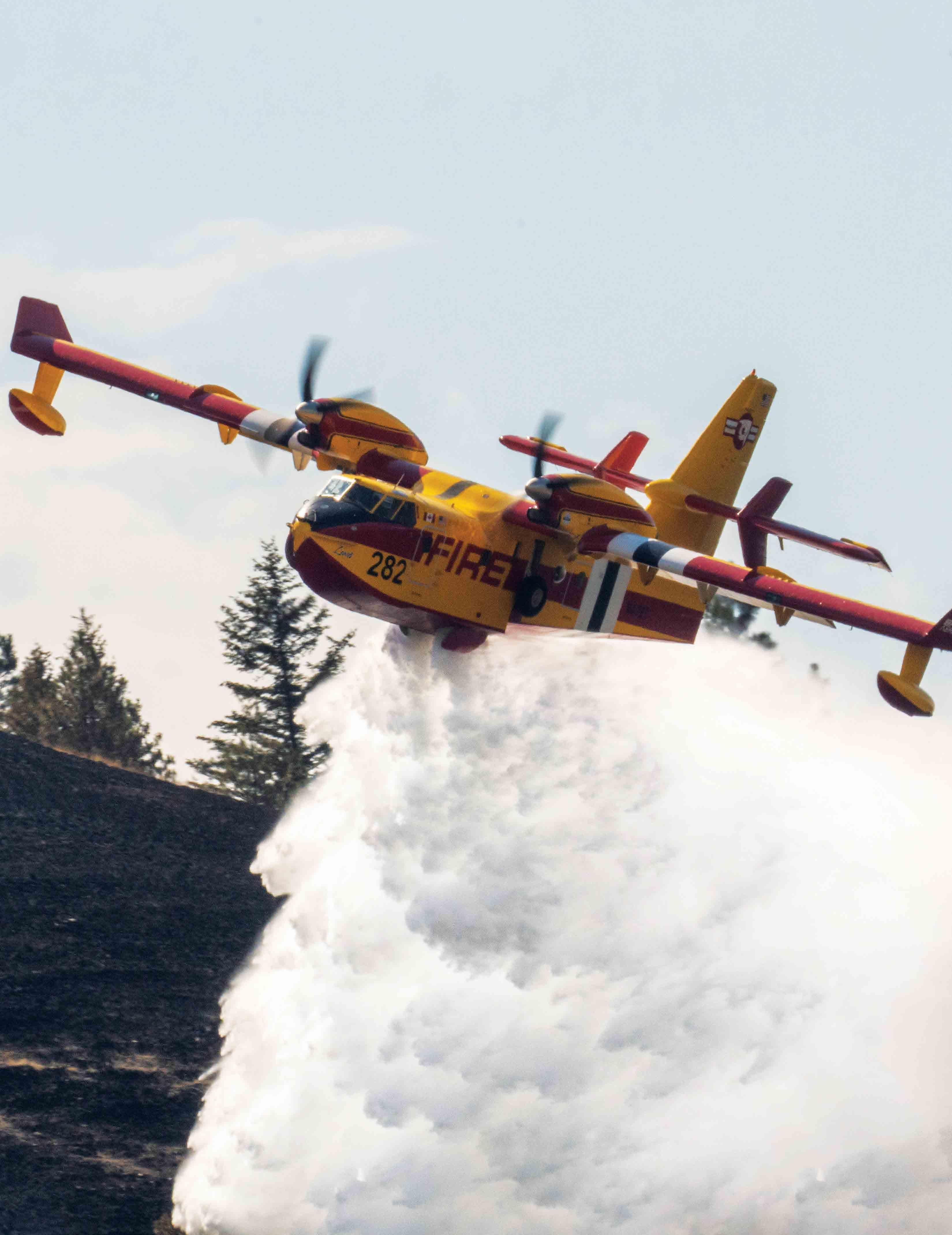
How the Federal Government can Reduce the Burden on American Taxpayers of the Escalating Wildfire Crisis
Massive crises will take lives, destroy businesses, wreak havoc on the economy, devour funds in federal and state coffers, drive up taxes paid by all Americans, and burn millions of acres.
Vision

(Support Our States) Legislation
Only three things can stop small fires from becoming mega-disasters. It rains heavily and perfectly timed to dampen fires already ignited. Or, the fires happen to burn fast and furious in a finite set of terrain, given wind direction, etc., until all possible fuel (trees, grasses, etc.) is consumed before the fire leaps into adjacent forested or urban areas.
Or the fire is controlled/contained and extinguished by human intervention – ground and airbased attack. Scenarios one and two depending on Mother Nature amidst a global environment that is undeniably warmer and dryer. Scenario three is the only practical solution that leaders with vision and a sense of urgency concerning the wildfire threat can act upon in the near term.

Most states cannot afford to maintain, own/lease, and operate adequate aerial fleets. The cost and expertise involved in having the aerial assets standing by, certified, safe, and ready to fly is outside most states' budget and technical bandwidth (California being the exception). Due to the economy of scale and the cost of operations, it is difficult for the air tanker contractor and a state to enter into economically feasible agreements.
Following are the basic, credible facts behind 2021's proposed "Wildfire SOS" legislation. An actionable proposal would save taxpayers billions of dollars annually for minimal cost.
Excellence Since 1945”

YOUR NEXT AIRCRAFT IS HERE. 281-342-5451 888-995-5263 TEL • 281-232-5401 FAX logan@laneav.com • www.laneav.com LANE AVIATION, INC. ROSENBERG, TX “Flying
of 2021 "Wildfire SOS"
➤
Why "Wildfire SOS" Legislation
Wildfires are burning faster, hotter, and longer due to climate deviations and land and environmental management practices that fuel the fires. While policymakers and those responsible for managing state and federal forests and wildlands continue to seek solutions to these two core causes of today's mega and giga wildfires (burning >100,000 acres), it's not just the USFS but the entire country, regardless of jurisdiction, that needs immediate measures to mitigate this threat to our infrastructure, economy, and the lives of those citizens in the line of fire.
Modern fixed-wing aerial firefighting is a proven, critical component to contain and control fires before they explode into massive catastrophes. A 2020 study by George Mason University that analyzed over 350,000 lines of U.S. Forest Service wildfire and aerial attack data proved unequivocally that "rapid initial attack" by the air dramatically curtailed the duration of wildfires. Duration has a direct correlation to the eventual cost of fires.
According to the Congressional Research Service, approximately 50% of wildfires in America occur on federally-owned lands, and over half ignite on state and locally-owned lands. And, in many cases, fires leap from one jurisdiction to another. This parity of

land ownership and wildfire locations is in no way reflected in the availability of aerial firefighting assets. In summary, the states, especially those western states at the epicenter of the wildfire threat, could, given the immediate availability of large and very large air tankers, dramatically mitigate the threat and the eventual cost of wildfires that impacts all Americans regardless of where they live.
Five Irrefutable Facts Supporting the "Wildfire SOS" Legislative Proposal
1. The United States Forest Service already has an air tanker aviation management program consisting of large and very large air tankers for the protection of Federal lands. This program includes exclusive use (EU) contracted aircraft and call-when-needed (CWN) aircraft, which states may use but are either unavailable or/or not requested due to cost incurred when used. The current CWN contracts involve $0 cost to the American taxpayer until the aircraft are deployed on urgent firefighting missions, in which case the National Fire Fix funding kicks in. CWN is a contracting method that significantly benefits the government/taxpayer – no risk/cost unless the aircraft is deployed; however, this benefit has destabilized the industry, compromised surge capacity, precluded investment opportunity, and limited innovation.
AF 70 | aerialfiremag.com
2. As evidenced by USFS data in eleven out of the past twelve years, every available CWN air tanker, including multiple deployments of the Military C-130 National Guard air tankers (MAFFS), the USFS struggles to meet the demand for fires on federal lands. Not unlike most years, in addition to the currently contracted EU aircraft, 100% of CWN contracted large and very large air tankers and;


3. The USFS used MAFFS in 2020. Many States and Federal Agencies were requesting aircraft, where orders were sent back unable to fill (UTF). 3. It is difficult for the industry to build a business plan involving aviation's significant capital investments on the CWM model. Pilot recruitment, sustainment, and development of new technology to increase efficiency and effectiveness are lacking due to the inability to plan using a fleet of 50% CWN. If the current federal CWN air tanker fleet were allotted exclusive use contracts in support of and assigned to states for use, three things would occur:
It would provide stability to the industry. Currently, vendors can only guess and gamble on how much employment the next fire season will bring, where the resulting increased costs are passed on to taxpayers due to the exorbitant use of the CWN fleet.
States would now have guaranteed access to air tankers where rapid initial and sustained attacks of wildfires could be realized.
If planning and potential income are created based on known demand, the air tanker industry would undoubtedly respond by seeking additional aircraft under a federal CWN contract, where an appropriate surge capacity will be realized.

4. It is important to know that all Americans pay for wildfires and the damage they cause, just as they do for other national disasters such as hurricanes, floods, and earthquakes. During these national disasters, States often engage in Federal Management Assistance Grants (FMAG), where the Federal Government and all taxpayers bare the lion's share of the cost. If wildfires were to be mitigated quickly through aggressive sustained rapid initial attacks before they become a disaster by utilizing air tankers, the number of FMAGs would be significantly reduced. To be successful, states would need immediate access to air tankers for initial attack; this would only be possible if the air tanker was available for initial response and a federal grant covered the initial cost. Once again, substantiated by the only existing air tanker use study produced to date through George Mason University. The capture of just one major fire incident that, on average, costs the American taxpayer tens of millions of dollars in suppression, recovery, life, and property would justify such a bill.
5. The cost of managing and contracting large air tankers is exorbitant and necessitates a specialized skill set. Federal agencies have recognized this and have funneled this responsibility to just one agency, the United States Forest Service, for use by all Federal agencies. By doing so, the Federal Agencies have engaged in the economy of scale. Any agency using a Federally contracted aircraft assumes the operational liability of that aircraft. By having the aircraft meet all Federal contracting standards, there is undeniable oversight for the safe operational use of the aircraft. This same thing cannot be said of most state agencies due to the complexity and cost of oversight. This is why Federal Agencies often do not allow state-only certified aircraft to engage in Federal fires unless there is a life threat. California is one of the single states where state certification is accepted in some, but not all, instances.
6. An appropriately staffed air tanker program across the United States and appropriately staffed hand crews are the two single human-managed systems that may be employed today that will dramatically affect fire. The demise of these two components is the root cause of many of the world's wildfires escaping control only to become megafires. Aviation and ground resources may be successful by themselves. However, the appropriate combination of employing both resources simultaneously when needed potentiates each resource's effectiveness.
aerialfiremag.com | AF 71
Tackling Rotorcraft’s
“Dirty Dozen”
by Jim Tise, FAA’s Office of Communications
The pilot of the Bell 206 helicopter was returning on a crosscountry business trip, flying in good weather with visibility of at least 10 miles. At 4:12 p.m., the pilot called a local car rental agency. The rental car employee stated she could not tell that the caller was in a helicopter, but he seemed “busy or distracted” and that she was in “midsentence” when the line was disconnected.
During the last five minutes of the flight, the helicopter’s GPS altitude varied between 6,200 and 6,456 ft. Mountains in the area stood at altitudes between 6,000 and 6,400 ft. The helicopter hit terrain at 6,330 ft. The pilot was killed. Based on the information available, the pilot was likely using his cell
phone during the low-altitude flight and became distracted, which resulted in a fatal controlled flight into terrain.
A true story. A tragic scenario. And just one of many flying risks that the FAA hopes to mitigate with a webinar on helicopter safety focused on the “dirty dozen” common mistakes that can result in helicopter accidents.
James Dangerfield, FAASTeam manager at the Flight Standards District Office (FSDO) in South Carolina, created a presentation for mechanics and pilots detailing the “Dirty Dozen” safety issues. During the webinar, he discussed “safety nets,” methods to avoid them from occurring.

AF 72 | aerialfiremag.com
“I’ve been doing ‘The dirty dozen presentation’ — which focuses on airplanes — for years and I realized there is a big gap out there for helicopter operators and their mechanics,” said Dangerfield. The webinar is designed “to inform them about the areas they need to pay attention to and know the dirty dozen are out there to help mitigate their risk,” he added.
Dangerfield is an expert on aviation safety. He was a helicopter mechanic in the U.S. Army working on Cobras, and in the National Guard working on Apaches.
In the presentation, he runs through 12 categories of mistakes made by helicopter operators including distraction fatigue; lack of knowledge, awareness, or assertiveness; complacency; stress and pressure.

Dangerfield and two FAA Safety Team (FAASTeam) managers in Greensboro and Charlotte, North Carolina, Tim Haley and Ed Shields, then present concrete ideas to avoid these potentially fatal pitfalls.
For example, he talks about the danger and the problems that can occur if the pilot is distracted. “Your mind has
completely left the job that you’ve been tasked [with],” he explained. “I think it happens more than it gets discovered.”
Dangerfield suggests using detailed checklists. And don’t hesitate to go over old ground, “Going back three steps allows you to double check the last three steps you made without missing anything.”
Dangerfield assembled this Dirty Dozen webinar with Haley and Shields. For the past three years, the trio have presented safety webinars on a dozen topics related to fixed-wing flight.

Even before the COVID-19 public health emergency forced many activities to go virtual, webinars offered advantages to in-person seminars. “We’re getting a lot more people than you might see at an in-person seminar,” reflected Dangerfield.
Haley also has noticed that some pilots and mechanics may be embarrassed to ask questions in front of their colleagues. “Low-time pilots are afraid to ask questions in front of more experienced pilots,” he said. With the relative anonymity of a webinar, Haley also noticed higher quality questions coming in.
aerialfiremag.com | AF 73

Flagler County, Florida Bids Farewell to Flight Operations Chief

“Our history goes back further than the 20 years each of us has been here.”
by Julie Murphy Flagler County Public Information Officer
Dana Morris and FireFlight weren’t exactly a package deal when Flagler County purchased the helicopter in January 2002. The veteran helicopter pilot was asked shortly after its purchase to fly for the county temporarily until the position could be permanently filled.

Twenty years and more than 12,500 flight hours later, Morris will power down the rotorcraft for the last time as its pilot on November 13 – five days before his official retirement after 43 years of flying.
“Our history goes back further than the 20 years each of us has been here,” Morris said, reflecting on his career in Flagler County. “I was working for the company that sold the county FireFlight, assigned to firefighting and as a searchand-rescue pilot in Yosemite (National Park, California).”
The decision to purchase FireFlight (built in 1998) was made in the aftermath of the ‘98 wildfires in Flagler County – the first time in US history that an entire county was evacuated due to wildfire. During those fires, 71 homes were destroyed, and another 175 homes were damaged.
Flagler County's helicopter program has evolved under Dana Morris over the years to now encompass search and rescue, EMS and firefighting.
Since its purchase, FireFlight has dropped about two million gallons of a water and foam mixture from its “Bambi Bucket” – or about 8,653 bucket drops – for fire suppression. Reconnaissance and fire suppression combined account for 54% of its usage by flight hours and 49% of its number of flights.

“I didn’t necessarily expect to be here, and I wasn’t sure I wanted to take the job full-time. My mother lived in Florida, so I accepted it to be near my mother,” Morris said, who has a thirst for adventure.
His recreational passion led to his eventual career: a 1978 trip to British Columbia, Canada, to go helicopter skiing.
Morris’s work with helicopters led to stints at the Grand Canyon, New Guinea, Australia, Burma, Yemen, and most of the western United States, including Alaska.
“Flagler County was, and still is, growing,” Morris said. “Though its primary mission is fire suppression, FireFlight is equipped for medical flights and to assist law enforcement. It’s equipped with an infrared camera for use during nighttime operations.”

He recalls an early mission – probably 2003 – where he, FireFlight, and his flight medic rescued a lost hunter who was having heart problems.

“He was lost in the woods in an area where it would be difficult to get to him with an ambulance,” Morris said. “It was nighttime, dark, and the hunter was able to position the phone so that we could see it. Between that and the reflection of his clothing, we were able to get right to him. We loaded him up and went straight to the hospital (that is now AdventHealth Palm Coast).”
Not a single occupied dwelling has been lost due to wildfire since the acquisition of FireFlight. It was instrumental in keeping the massive wildfire events during 2007 and 2011 at bay.
Morris has a scrapbook of old-school newspaper clips and letters of commendation highlighting notable events of their tenure together in Flagler County.
“This has been a great job, and I have had the pleasure of working with a lot of talented people,” Morris said. “It’s been a memorable and great ride.”
aerialfiremag.com | AF 77
Dana Morris has been a pilot with the agency since its inception.
Dana Morris worked for the company that sold the county the helicopter and was only supposed to be a temporary pilot.
Hypertension
by Dr. Penny Giovanetti FAA Medical Specialties Division director
Hypertension (high blood pressure) is one of the most common conditions faced by pilots seeking medical certification.

Blood pressure is the measurement of the force of the blood pushing against the walls of the arteries as the heart pumps blood. The measurement is presented as two numbers: the systolic (top number) over the diastolic (bottom number) in millimeters of mercury (mmHg).

The American College of Cardiology’s published hypertension guidelines are as follows:
A doctor should not diagnose hypertension based on a single reading or at one point in time. If your blood pressure is elevated on an examination, your doctor may schedule follow up readings to determine if you have hypertension or not. Your Aviation Medical Examiner (AME) is not required to follow up on your elevated blood pressure unless the systolic reading is higher than 155 or the diastolic reading is higher than 95 on the FAA medical examination. However, he or she may recommend that you follow up with your personal physician for an elevated blood pressure even if it is within FAA limits.
Frequently Asked Questions
I have hypertension. What should I do?
You should determine an appropriate treatment plan with your physician. Uncontrolled hypertension significantly increases your risk of stroke, heart attack, kidney failure, and other vascular diseases. Remember though, that the FAA evaluation is only to determine if you can safely fly for the duration of your medical. While values under 155/95 are acceptable for FAA medical certification, you
AF 78 | aerialfiremag.com
should not think that these are acceptable for long-term health. If you have elevated blood pressure levels, do yourself a favor and get treated, even if you still qualify for a medical without medications. Certifying a pilot with well-treated hypertension is very straightforward. While we do certify individuals after a heart attack or stroke, it is much more involved. Why risk this or, more importantly, the possibility of permanent impairment?
Can I get treatment that is acceptable to the FAA?

Lifestyle changes such as weight loss, exercise, and a healthy diet are highly encouraged whether you have hypertension or not. Nearly all anti-hypertensive medications are acceptable to the FAA. Combinations of up to three medication components may be considered under the CACI program. The one exception is the class of drugs known as “centrally acting,” e.g., Catapres (clonidine), but this class is generally avoided in current practice. More than three drugs (not pills, as one pill may contain 2 or 3 drugs) will require a special issuance.
How long will it take to get my medical certificate?

If you meet all the criteria listed in the Conditions AMEs Can Issue (CACI) worksheet, your AME can issue a medical certificate at the time of your exam. You can view that worksheet at bit.ly/CACIWorksheets or simply Google “FAA CACI Hypertension.” Make sure that you bring the current, detailed progress note and have been stable on your medications at least seven days. Otherwise, issuance of your medical could be delayed. If you have any questions, contact your AME or Regional Flight Surgeon.
Dr. Penny Giovanetti, D.O., received a bachelor’s degree from Stanford, a master’s in Environmental Health and Preventive Medicine from the University of Iowa, and a doctorate from Des Moines University. She completed a 27-year career as an Air Force flight surgeon. She is board certified in aerospace medicine, occupational medicine, and physical medicine/rehabilitation. She is also a Fellow of the Aerospace Medical Association and a private pilot.
aerialfiremag.com | AF 79
At 26 Years Old, Mikaela Young is the Youngest and First Ever Female Fire Boss Pilot
by Public Information Officer Kelsey Griffee, Alaska Wildland Fire Information Center
Aerial firefighting is a dangerous job, and few make the cut in this fast-paced, adrenaline-fueled world. Water-scooping Single Engine Airtanker (SEAT) pilot Mikaela Young, a born and raised Alaskan, fits right in with her desire to do anything that “gets the heart rate up.”
At the age of 26, she is considered the youngest to pilot a Fire Boss and the first female in the world. She is
praised for her impressive flying and instincts beyond her years, according to officials at Dauntless Air, the company that owns the contracted firefighting airplanes.
Young grew up homeschooled with four siblings on an off-grid, 320-acre homestead near Talkeetna, Alaska. Her family lived in tents for three years while building their house. When she turned 15, she started logging seven days a week to pay for her first truck. Young credits her work ethic to her parents. ➤
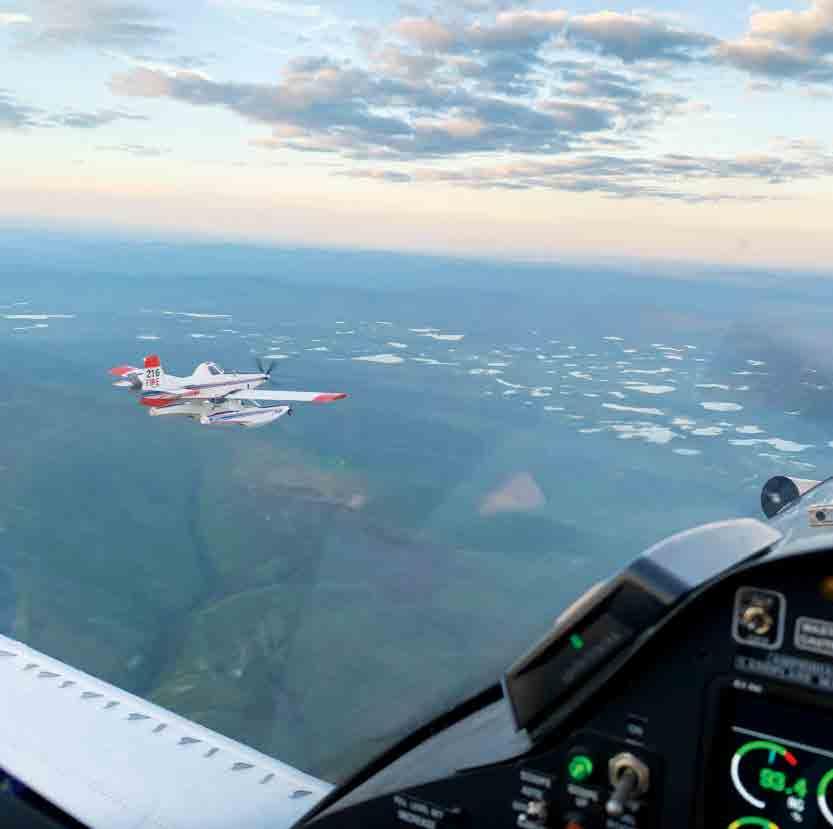
AF 80 | aerialfiremag.com


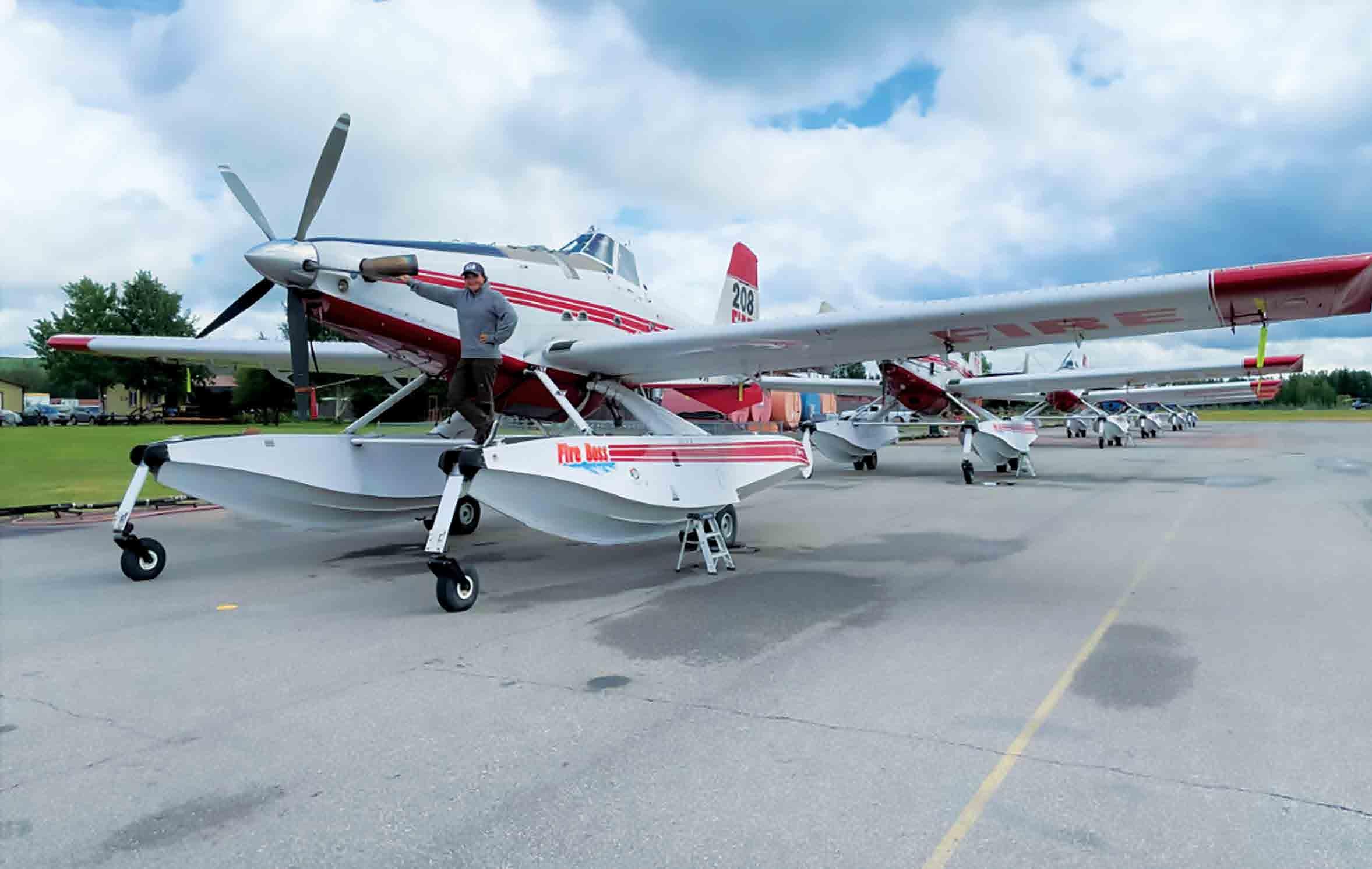
aerialfiremag.com | AF 81 TM
Young was inspired to enter the aviation world after participating in Build A Plane, a nonprofit that gives Talkeetna youth the chance to rebuild an airplane. After rebuilding a Cherokee 6, Young decided to pursue a career turning wrenches as an airplane mechanic.
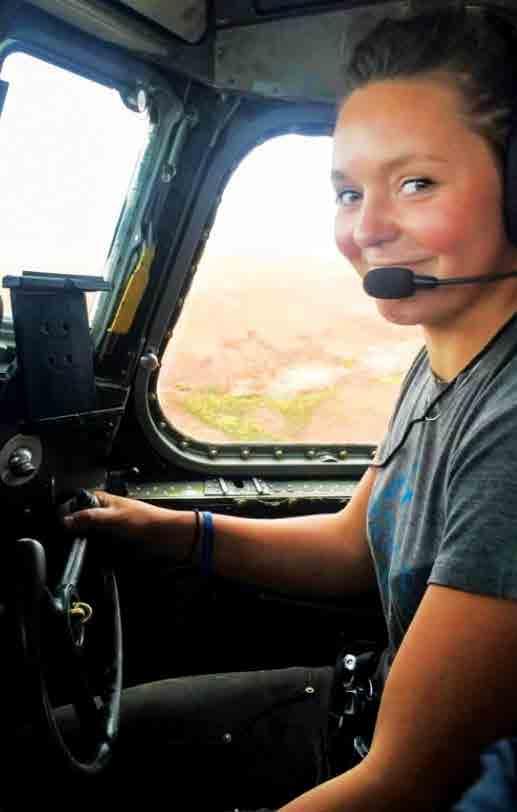
Young had “wicked” motion sickness growing up and never thought she would be a pilot. But her need to “try everything” and learn more about the planes she worked on changed her mind.
She convinced a coworker to instruct her, and within a year, she had earned all her pilot ratings, including private, commercial, and multi-engine. She got her start in commercial aviation as a flight engineer and then moved up to piloting World War II DC-6 and C-46 planes, the giant cargo planes that transport fuel and food to remote Alaskan villages.
“I like the flying world more than the wrenching world because there is always something new. Different weather, scenery, and emergencies,” Young said. “Wrenching was a lot of the same tasks every day.”
She first saw the Fire Bosses, the water-scooping airplanes that look much like crop dusters with floats, while flying cargo across Alaska. These floats give them the Fire Boss name and separate them from the SEATs flown in the Lower 48 with a wheeled configuration.

Then, a year ago, she met Mindy Lane, a SEAT base manager with the BLM Alaska Fire, and Sonny Amboni, a Dauntless pilot. They explained the requirements to become an aerial firefighter. At the beginning of the fire season, the BLM AFS contracts four Fire Bosses to respond to wildfires throughout the state and orders additional when fire activity increases.
“I thought (Fire Bosses) were pretty cool and convinced (Dauntless Chief Pilot and Director of Operations) Jesse Weaver to hire me,” Young said. “Flying a Fire Boss is awesome! I love being the only one in the cockpit.”
“Flying a Fire Boss is challenging. Scooping is the most difficult thing I have ever done in an airplane,” Young said. “You are flying across the water at 60 knots when you put the probes out to scoop water. Initially, it dips the nose, and you have to correct that. As the hopper fills with water, the plane starts to porpoise from sloshing water, and you are eating the wake of the plane in front of you. You’re heavy and slow, and the plane doesn’t want to fly.”
This year, Young flew her first fire in her home state of Alaska. It was small smokey spot fires, but her second fire was “big flames.”
“It was cool,” Young said. “I can’t believe I get paid to do this.”
When asked what she thinks about being the first female Fire Boss pilot, “It’s pretty cool to be given the chance. I don’t see it as a big difference. I have always worked in a male-dominated field. I do like being the youngest working with all these grandpas. It looks like bring your grandpa to work day.”
Look for Young in smokey skies, flying her favorite Fire Boss – named “Caroline” with a painting of a woman firefighter holding a Pulaski much like Rosie the Riveter – as she fights fire across the country.
AF 82 | aerialfiremag.com
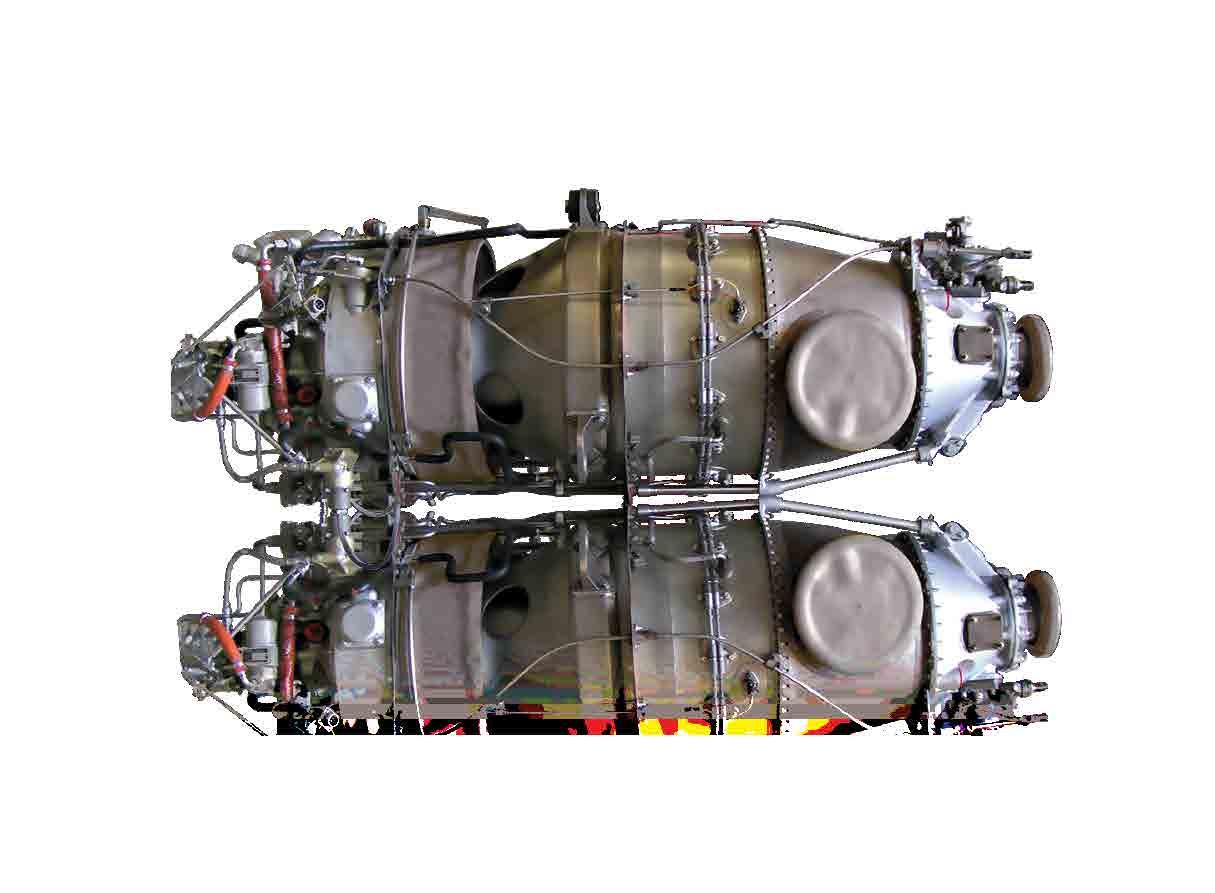
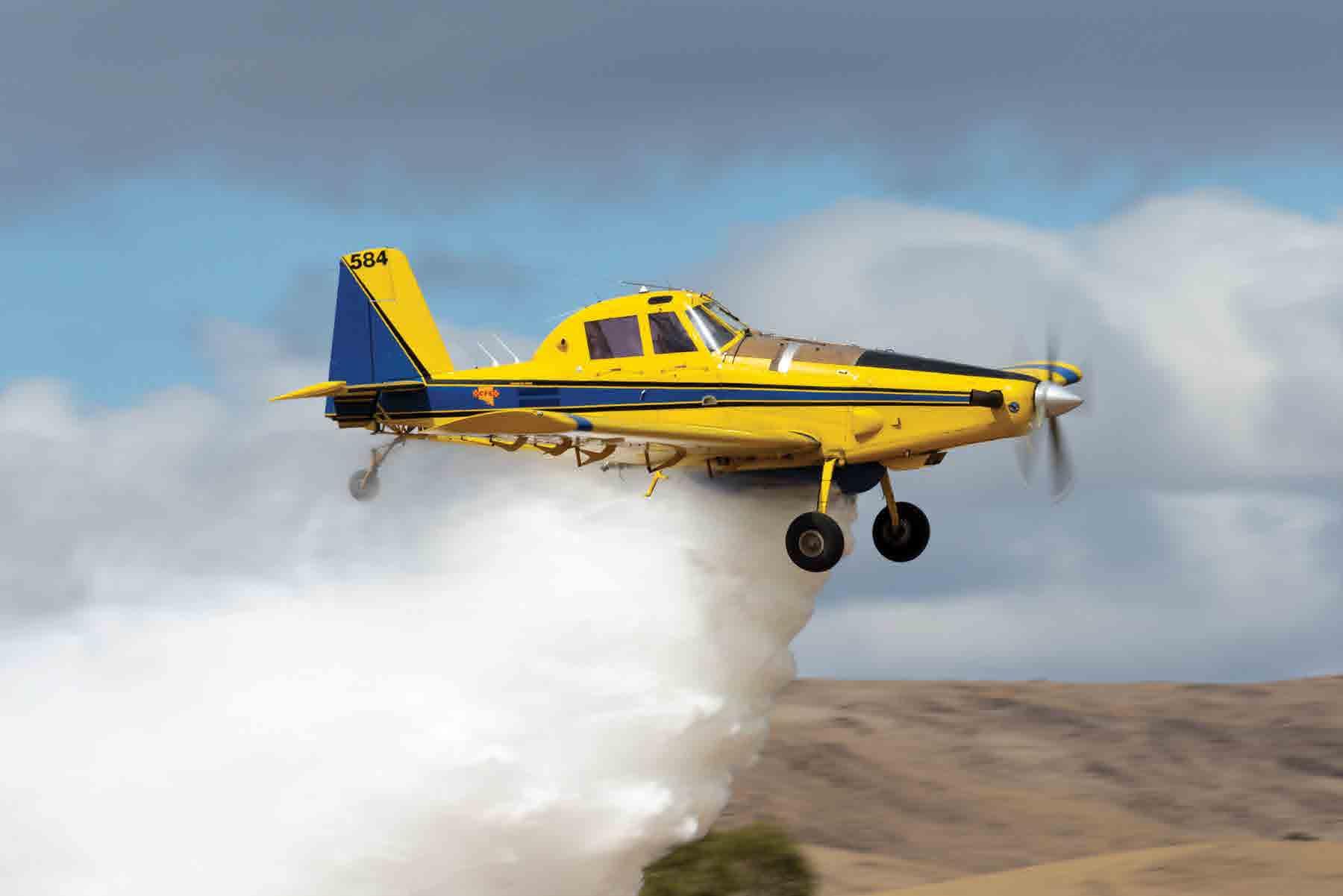
aerialfiremag.com | AF 83 ADVERTISER INDEX Active Headsets .................... 45 Advanced Flight Training & Leasing 65 Air Bear Tactical 45 Air Tractor Inc 84 Anodyne Electronics Manufacturing 81 Assured Partners 19 Blue Sky Network 39 Bridger Aerospace 17,29 Cascade Aircraft Conversions 49 CD Aviation 7 Coastal Air Strike 31 CoFire Aviation 55 Conair Group Inc 23 Davidson Solid Rock Insurance 53 Desser Aerospace 49 Fire Boss 21 Flightcell 39 Forest Protection 37 Frost Flying 67 Isolair 53 Kawak Aviation 41 Lane Aviation 69 Merit Apparel 35 Neal Aircraft 2 Paraclete Aviation Life Support ................................... 49 Perimeter Solutions ......... 3,51 Pratt & Whitney Canada ....... 15 Smith Myers ........................... 35 Southwest Airmotive............ 35 Spidertracks Limited ........... 53 TAE Aerospace ...................... 25 Tangent Link .......................... 27 Trac Plus ................................. 41 Trotter Controls ....................... 5 Turbine Conversions LTD .... 33 Turbines Inc. .......................... 83 Turbine Training .................... 52 Valley Air Crafts .................... 47 Zanoni Equipment................. 63
AIR TRACTOR DELIVERS.







AIR TRACTOR DELIVERS THE PERFORMANCE, EFFICIENCY, AND PRECISION THIS JOB DEMANDS. IT’S TIME YOU DEMAND MORE.
































 A Columbia Helicopters CH-47 fights the Fairview Fire in California. Photo by Mike Murawski.
A Cal Fire S-2 drops on the Fairview Fire in Hemet, California. Photo by Marty Wolin.
A Columbia Helicopters CH-47 fights the Fairview Fire in California. Photo by Mike Murawski.
A Cal Fire S-2 drops on the Fairview Fire in Hemet, California. Photo by Marty Wolin.



 A Vigili Del Fuoco CL-415 prepares to scoop a load in Italy. Photo by Carlo Francesconi.
A mass of helicopters on the way in to drop on a fire in Spain. Photo by Fernando Rodriguez Cubero.
A Vigili Del Fuoco CL-415 prepares to scoop a load in Italy. Photo by Carlo Francesconi.
A mass of helicopters on the way in to drop on a fire in Spain. Photo by Fernando Rodriguez Cubero.



 Santa Barbara County’s Copter 964 fights the Pantera Fire, its first assignment in California. Photo by Keith Cullom.
An Australian Pay’s Aviation Fire Boss comes in for landing in Greece. Photo by Kostas Marmarelis.
Santa Barbara County’s Copter 964 fights the Pantera Fire, its first assignment in California. Photo by Keith Cullom.
An Australian Pay’s Aviation Fire Boss comes in for landing in Greece. Photo by Kostas Marmarelis.














 Photo: Alexandre Dubath
Photo: Alexandre Dubath

























































































































 by Dan Reese
by Dan Reese






























